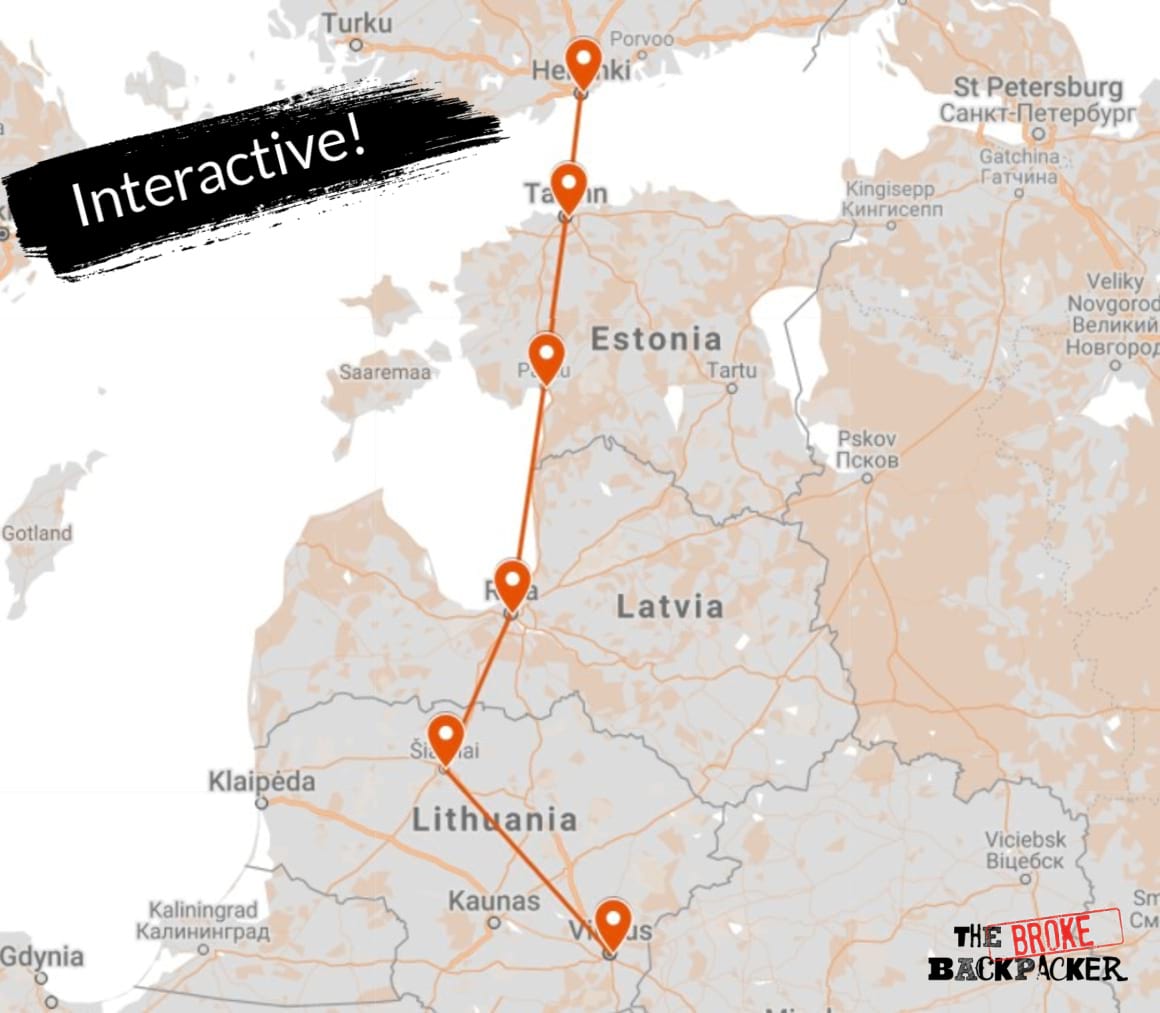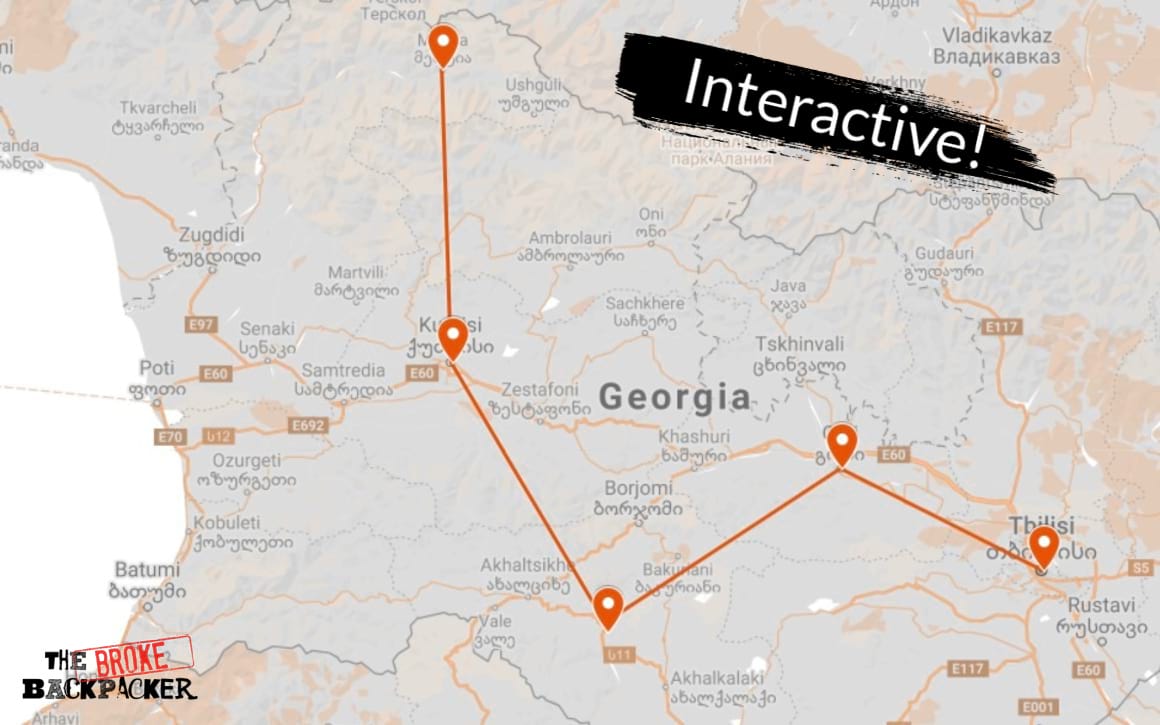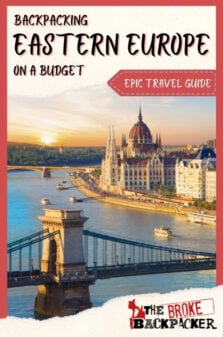As one of the underrated hidden gems in Europe, Eastern Europe is slowly but surely creeping into the backpacker’s eye. Formerly kept behind the Iron Curtain for pretty much all of the last century, travelling there was difficult – if at all possible.
Luckily, Eastern Europe is very much open for the backpacking business nowadays and welcoming curious travellers from all across the world.
A trip to Eastern Europe offers a unique version of Western civilization and manages to feel familiar yet different at every twist and turn. Whatever you are seeking from a backpacking trip you will find it here.
From Cold War relics scattered across Ukraine to Crusader fortresses in Georgia and some of the world’s great cities – there are countless incredible attractions in Eastern Europe that you can’t experience anywhere else. Enjoy endless summer days in Lithuania or fine hiking in Armenia, there’s really nothing that this stunning region can’t offer you.
So get ready for the ultimate travel guide to Eastern Europe. Let’s get right to it!
- Why Go Backpacking in Eastern Europe?
- Best Travel Itineraries for Backpacking Eastern Europe
- Places to Visit in Eastern Europe
- Top Things to Do in Eastern Europe
- Backpacker Accommodation in Eastern Europe
- Eastern Europe Backpacking Costs
- And Speaking of Plastic… Get an eSIM For Eastern Europe
- Best Time to Travel to Eastern Europe
- What to Pack for Eastern Europe
- Staying Safe in Eastern Europe
- How to Get into Eastern Europe
- How to Get Around Eastern Europe
- Working in Eastern Europe
- What to Eat in Eastern Europe
- Eastern Europe Culture
- Some Unique Experiences in Eastern Europe
- Final Advice Before Visiting Eastern Europe
- Buy Us a Coffee!
Why Go Backpacking in Eastern Europe?
A quick side note before we start: For the purposes of this guide, Eastern Europe is broken down into 4 loose regions.
- Central Eastern Europe
- The Baltic States
- The Russian frontier
- The Caucasus
Note that we have not included the Balkans in this guide as we have a full, detailed and awesome Balkan Backpacking Guide elsewhere on this site.
An Eastern Europe trip offers pretty much everything you could want from an adventure. If you fancy a quick city break, then stick within the EU and head to Prague or Budapest. Or for a journey into history, follow in the footsteps of the Crusaders in the mountains of Georgia and Armenia. If you fancy something offbeat, then hit up the Baltics to check out the more maligned corners of Europe or, get your shit together and venture into Russia for the adventure of a lifetime.
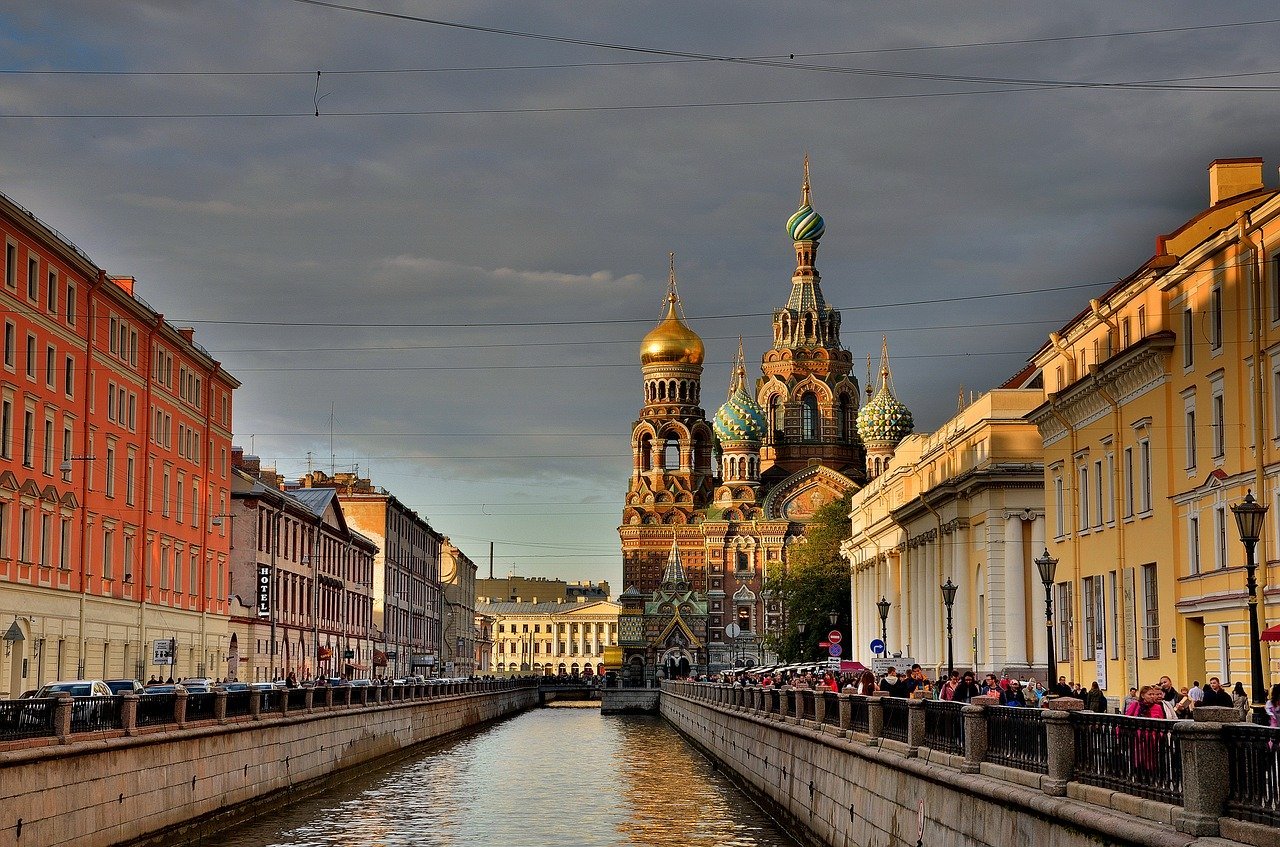
The Broke Backpacker is supported by you. Clicking through our links may earn us a small affiliate commission, and that's what allows us to keep producing free content 🙂 Learn more.
For me, backpacking in Eastern Europe is infinitely more fun, exciting, eye opening and cheaper than sticking to Western Europe. Do not miss it.
Best Travel Itineraries for Backpacking Eastern Europe
To make your Eastern Europe experience a success, we’ve created a few itineraries that offer the best of the region no matter if you’re only travelling for a week or a month.
Eastern Europe By Interrail – 1 Week
A classic way to get a taste of Eastern Europe is by using interrail. You can buy an interrail pass online which allows you to use the train network across much of Europe. All of these countries are in the EU so there are no border or visa issues as long as you have Schengen access.
Start in Prague, one of the world’s great cities (if you go in low or shoulder season) where you will find art galleries, museums and architectural gems in true abundance. Prague is extremely well located by rail and it is a short ride to Bratislava, the capital city of Slovakia.
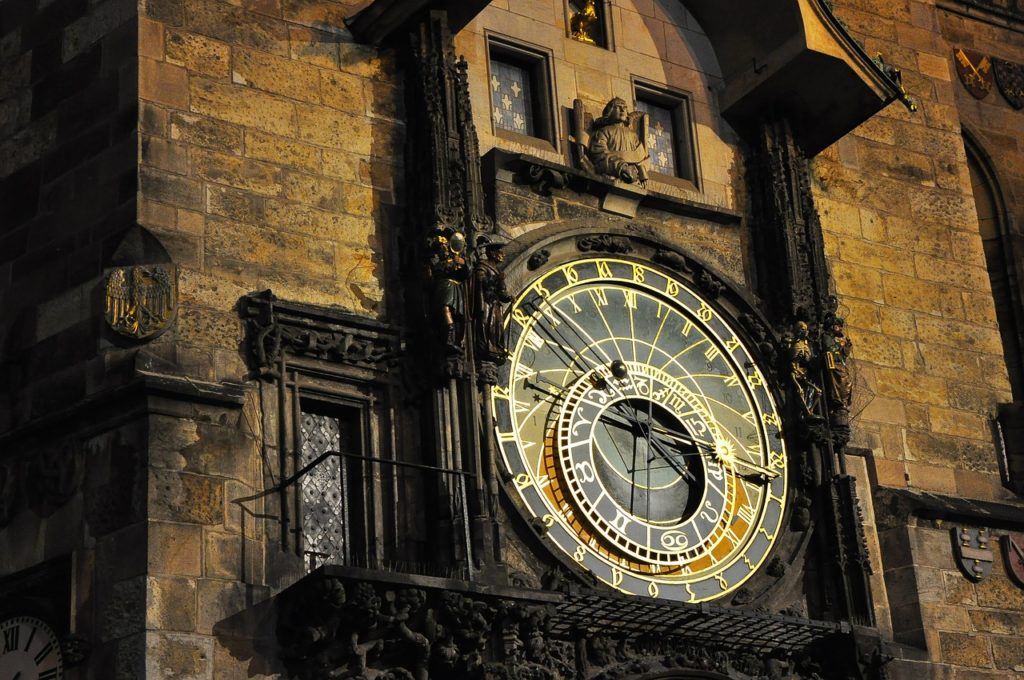
The next stop is a true titan of a city, the Hungarian capital of Budapest was once the seat of an empire and tales of former splendour abound at every turn. A few days staying in Budapest is plenty to see the majestic parliament building, the Fisherman’s Bastion and to have a night out exploring the ruined pubs. If you have time, do swing by the “Socialist Theme Park” known as Memento Park – it’s a must for fans of kitsch, offbeat, communist monuments.
After Budapest, get back on the train up towards Krakow in Poland. The city itself is charming but don’t miss the chance to visit Auschwitz. From Krakow, head to either Warsaw, Wroclaw or all the way to Gdansk if you don’t mind a long ride (you can take the overnight sleeper).
The Baltic Triangle – 10 Days
This itinerary offers a taste of the Baltic States and can easily be done in under 2 weeks. If you are pressed for time and happy to keep moving, you can do it in 7 days although 10 days is the sweet spot.
The itinerary starts in Lithuania’s fun and hip capital city of Vilnius. Take a few days to admire the old towns, drink in the quirky watering holes and don’t miss the “Independent Republic of Užupis” – a bohemian neighbourhood by the river.
From here, take the train or bus to the city of Šiauliai. The city itself is OK but the main draw is the Hill of Crosses 12km of the city – you can get the bus, book a taxi or hitchhike pretty easily.

From here it’s time to cross our first border as we head to Riga in Latvia. The journey can be a long one on public transport so unless you can find a direct bus or shared car, take the overnight train. A few days in Riga should give you enough time to fire some AK47’s and take in the old town before making a day trip to Sigulda Castle.
The coastal journey from Riga to Tallinn in Estonia is pretty scenic in places but can be a long one on public transport. If you have the days to spare, it can be nice to break up the ride by stopping for a night or two along the way or even making a little detour. Parnu is a good shout as it is a pleasant old city which really comes alive in summer situated along the way. Or, if you want an inland detour do check out the 2600 year old city of Villidanji.
When you do arrive in Tallinn, you will love it’s cosmopolitan, hipster vibe. Also note that the Finnish capital of Helsinki is a ferry ride away and is still within the EU/Schengen zone.
The Caucasus Region – 1 Month
Seriously, Georgia’s one of those countries that you want to spend as much time as possible in. Crawl, if you must, across the entire country as you sample all the local flavors: the mountains, the wine, the culture, everything! If you have spent three months or so in the Schengen Area of Western Europe, a backpacking trip to Georgia and Eastern Europe is the way to stay in Europe without overstaying your Schengen visa.
I suggest starting in the western provinces for this itinerary. That way, you can just cross into Armenia or Azerbaijan without backtracking, and continue seeing the entire Caucasus region afterwards. Some of the best off the beaten path trekking in Europe can be found in Georgia.

Photo: Roaming Ralph
From Tbilisi the capital, head west towards the region of Samstkhe-Javakheti. Be sure to stop by the town of Gori along the way. Gori is the birthplace of Josef Stalin, and the man is still worshipped there to this day. Upon arriving in Samstkhe-Javakheti, staying either in Borjomi or Akhaltsikhe, you will have many opportunities to visit local landmarks. A trip to Vardzia, Khertvisi, and Sapara Monastery are all musts.
Next stop is Kutaisi, the cultural rival of Tbilisi. Though smaller than Tbilisi, Kutaisi is equal in historical significance. Visit the local religious sites, like Gelati, Bagrati, and Motsameta, to get the full experience.
Finally: a quick stop in Mestia gives travelers a chance to see some medieval relics. The guard towers, which protected the region from invading foreigners long ago, are hard to miss. Not so obvious is the Svaneti Historical-Ethnographic Museum. This museum contains some of the oldest artifacts in the Caucasus, and cannot be overlooked.
Want to save money on accommodation?
Enjoy 20% OFF on stays ALL around the world.
Places to Visit in Eastern Europe
Since Eastern Europe isn’t necessary small, we’ve done all of the hard work for you and listed the best places to visit. Note that these are separated into the Eastern Europe countries (apart from the balkan ones), with individual details each.
Czech Republic
Geographically, the Czech Republic is one of the Westernmost countries in Eastern Europe and quite fittingly was one of the first to break from the Soviet bloc and establish its alliance with Western Europe attaining EU membership in 2004.

Presumably the backpacker mecca Prague needs no introduction. It is now well and truly established as one of Europe’s classical cities and attracts almost as many visitors as Venice, Paris and Stoke-on-Trent. Be warned that in high season the city can become an unholy mess of boozed up weekenders, and coach loads of day tourists crowding all the important monuments. Some of Prague’s hostels and accommodation options are great whereas others are shamelessly bad.
The Czech Republic’s 2nd city of Brno is also a backpacker favourite and suffers from none of the mania of the capital city.
The summer festival season is a busy one with Rock, Techno, Psytrance and EDM (oh the horror) multi-dayers popping up all around the country as well as food, drink and jazz in the major cities.
What to Know Before Visiting Czech Republic

- Don’t miss out… The “bone church” in Sedlec. 700k human skeletons fashioned into art installations. Medieval Gothic at its least tasteful.
- Know what’s overrated? The Nightlife in Prague. Perhaps it was once great or maybe there is an underground scene I couldn’t find but I found the locals a bit unwelcomining, and the gangs of boozed up weekenders (mostly British and German) are truly irritating.
- The coolest hostel is….Hostel Elf in Prague. This was one of the best ever hostel experiences for me. Great people, amazing conversation and a bar-bq on weekends.
- The best food is food in…Lokal in Prague – An old style beer hall serving excellent pilsner and offering a daily menu of classic bohemian dish’s.
Slovakia
Formally joined with the Czech Republic, landlocked Slovakia is definitely one of the more maligned and overlooked countries in Eastern Europe although the capital city of Bratislava does get its fair share of summer inter-railers. There is a quite a bit to do in Bratislava, a fine city with some grand old neighbourhoods offering the typical Eastern Europe mix of old streets and warm bars selling cheap booze.

Away from the capital, there are over 100 castles in Slovakia – the most famous of which is perhaps the 12th Century Bojnice Castle which overlooks the town of the same name. It was used as Dracula’s castle in the 1922 silent film “Nosferatu”.
What to Know Before Visiting Slovakia

- Don’t miss out… Spis Castle is the oldest, fully fortified castle still standing in Europe. It was erected on a hill some 600 metres above the town of Spisska Kapitula. It offers a myriad of architectural styles, sweeping views, some gruesome tales and the chance for a bit of a hike.
- Keep an eye out for…The architectural gems of Banska Stiavanka. The UNESCO listed town centre is possibly the single most photogenic spot in Slovakia. Keep an eye out for your perfect picture and admire the gothic and renaissance structures all around you.
- The coolest hostel is….Wild Elephants Hostel in Bratislava. There are no wild elephants in Bratislava. Still this is the best party hostel offering a beer pong room (why?), a fusball table and best of all, a bar. They also organise pub crawls, walking tours and stamp licking contests (I made the last one up).
- The best food is food in… Look for humble, under-stated dare I say “traditional” restaurants and beer halls. These places serve local stodgy goodness. In particular you must try bryndzové halušky – fatty dumplings with sheep cheese.
Hungary
Budapest rivals Prague as Eastern Europe’s headline city and is a beacon for weekend breakers, culture vultures, and inter-railers. The Hungarian National Parliament building that sits on the banks of the Danube is an utterly stunning triumph of neo-baroque architecture and the Fisherman’s Bastion an absolute marvel of bone-white stone work.
The famous ruined pubs (literally, pubs built in abandoned, ruined buildings) are Budapest itinerary 101. And they are quirky fun although they have well and truly suffered under the weight of their own popularity and do get a bit rammed with transient instagrammers.

Most Hungary backpackers’ appetites are satiated by it’s epic capital and few venture any further. Therefore getting off the beaten track here is very bloody easy albeit a little under-welming. That said there are some fine castles near the border with Romania and the Szigliget castle even has a music festival named after it.
By the way, festivals are actually something Hungary does very well although the encroaching neo-Facist government has already begun the clampdown. I personally attended the O.Z.O.R.A. festival near Dadpuszta which is widely regarded as the 2nd best Psytrance festival in Europe.
What to Know Before Visiting Hungary

- Don’t miss out… The Hungarian Parliament building is one of my favourites in Europe. You can get up close but it may be better seen from the other side of the river. Sadly what is going on inside at the moment is truly alarming.
- Keep an eye out for… Fascists. No we are serious. Hungary is sadly lurching towards a far-right Dictatorship. You will probably be ok but minority and homosexual travellers should take care when outside of Budapest.
- The coolest hostel is….There are some true shockers here so choose carefully. Maverick City Lodge is clean, comfortable and wins the prize for least terrible Budapest hostel. Remember there is a 4% tax on bookings.
- The best food is food in… Budapest has a thriving vegan scene with deli’s. Cafe’s and micro-pubs access the city. There is also a decent Kosher scene and the most popular example is Mazel Tof located in the old jewish quarter.
Poland
Poland is definitively a treasure of the Eastern Europe backpacking scene although one that is all too frequently overlooked. The old town of Warsaw (and much of the city) was absolutely decimated by the Nazi’s in WWII and whilst much of it was painstakingly rebuilt, the city can still feel like a concrete dystopia on the surface. Probe a bit deeper though and you will find spirited locals, great museums, some amazing city walks as well loads of lively bars and nightclubs.
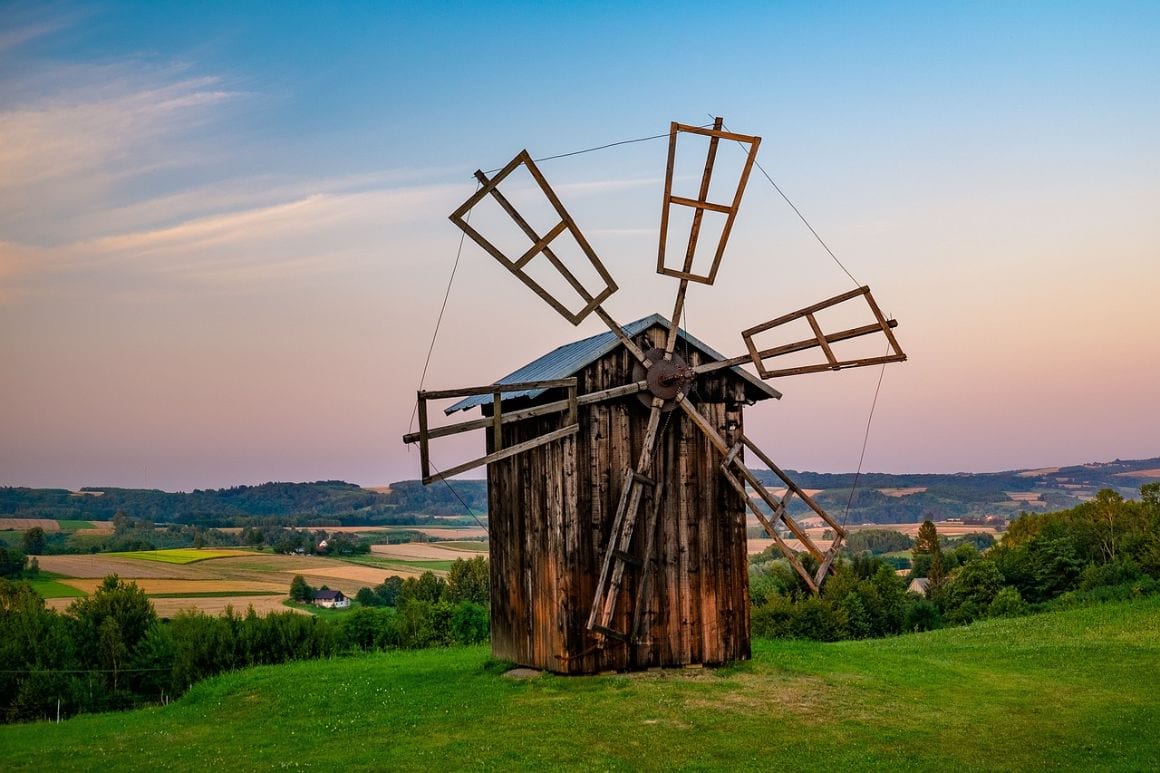
Wroclaw is a lot prettier and is justifiably more popular for city breaks. Then the city of Krakow is a delight with its mash-up of old castles, cobbled streets and communist era trams shunting along wobbly old tracks. If you do visit Krakow, then be sure to take a day trip to the Auschwitz-Birkenau concentration camp for an insight into the darkest chapter in modern history.
What to Know Before Visiting Poland

- Don’t miss out… The Poles love to drink and be merry. Don’t miss the chance to get into a bar or club and make some new friends over some Tysky and Schnapps.
- Keep an eye out for… If you visit Warsaw, keep an eye out for World War 2 sites as well as Soviet ones (in particular the monstrous palace of culture which Stalin “gifted” to the people). Few cities have suffered as much in the last century as Warsaw.
- The coolest hostel is….Hostel Cycle On, Gdansk. This hostel in Gdansk was initially aimed at cycle tourists but has extended it’s remit to welcome all comers. It is clean, cosy, friendly, well organised and they rent out bicycles which are the best way to explore Gdansk.
- The best food is food in… The old Jewish Quarter in Krakow has some top class restaurants serving typical Polish food – its stodgy, warming and pretty cheap.
The Baltics (Lithuania, Lavia, Estonia)
The Baltics are some of the most underrated travel destinations in Europe despite being a backpacker’s dream: they’re cheap, full of great hostels and packed with history, bizarre sights and epic parties.
The hostel scene in Tallinn is thriving. The capital of Estonia, has often been dubbed the most beautiful old town in Europe and as awesome as it is, you’d be wrong to make it your only stop in Estonia. As one of the greenest countries in the world, Estonia offers awesome hiking in the Lahemaa National Park, horse-back riding on the Saaremaa island and beautiful roads for cycling. Make sure to stop in Tartu to check out the famous Kissing Students statue for some luck for your love life!
In Latvia, you can party for the weekend in Riga, then take a relaxed hangover day in the spas of Jurmala or get your adrenaline flowing on a hike or a memorable bungee jump in the Sigulda National Park (it’s free if you go naked).
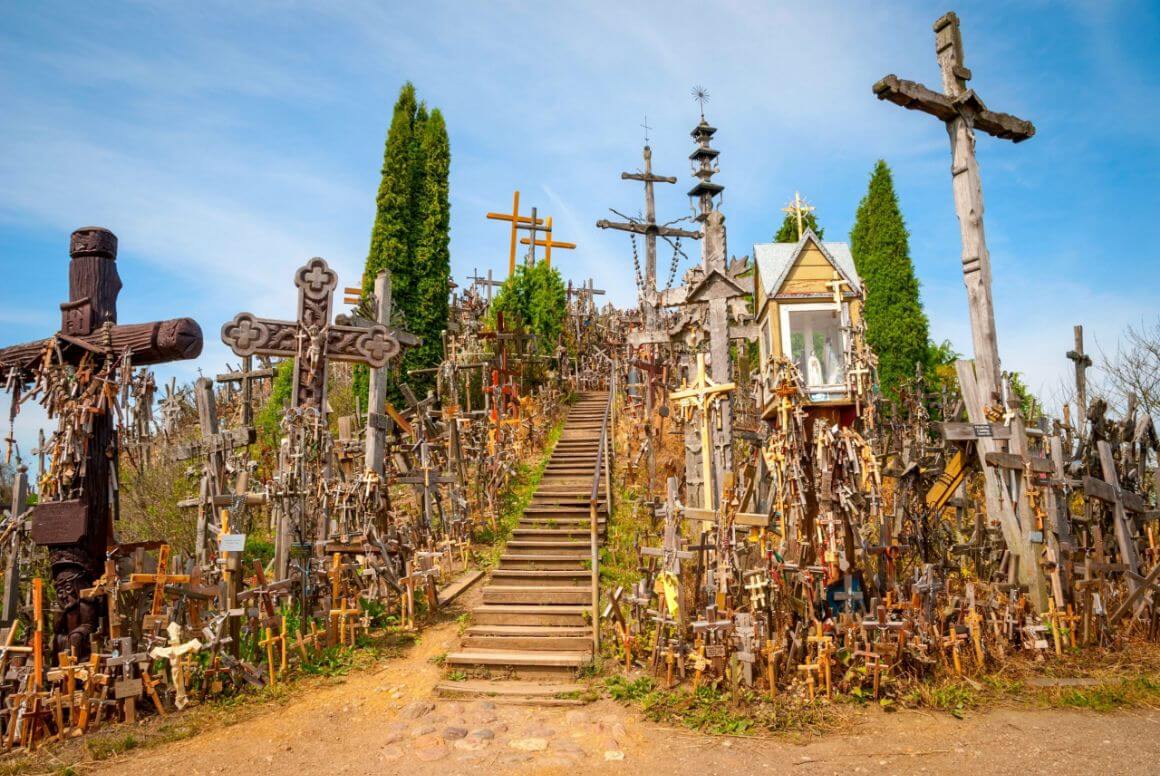
Lithuania is the least crowded of the three and the best destination for the lovers of all things strange and bizarre. You can mostly stay in Vilnius and see the rest by day trips staying a night or two out of town. Explore the world’s largest private collection of devil memorabilia in Kaunas, visit the mysterious Hill of Crosses or gawk at the weird statues in the seaside town of Klaipeda.
Travelling between the Baltic countries is easy through a well-established (and cheap!) bus network, and since all of them are members of the EU and use euros, moving between countries is minimum hassle. The area might seem small but with everything to offer from busy cities to chillaxed seaside towns, they pack a lot of punch in a small package and make for a lovely, less-visited destination for adventurous backpackers.
What to Know Before Visiting The Baltics
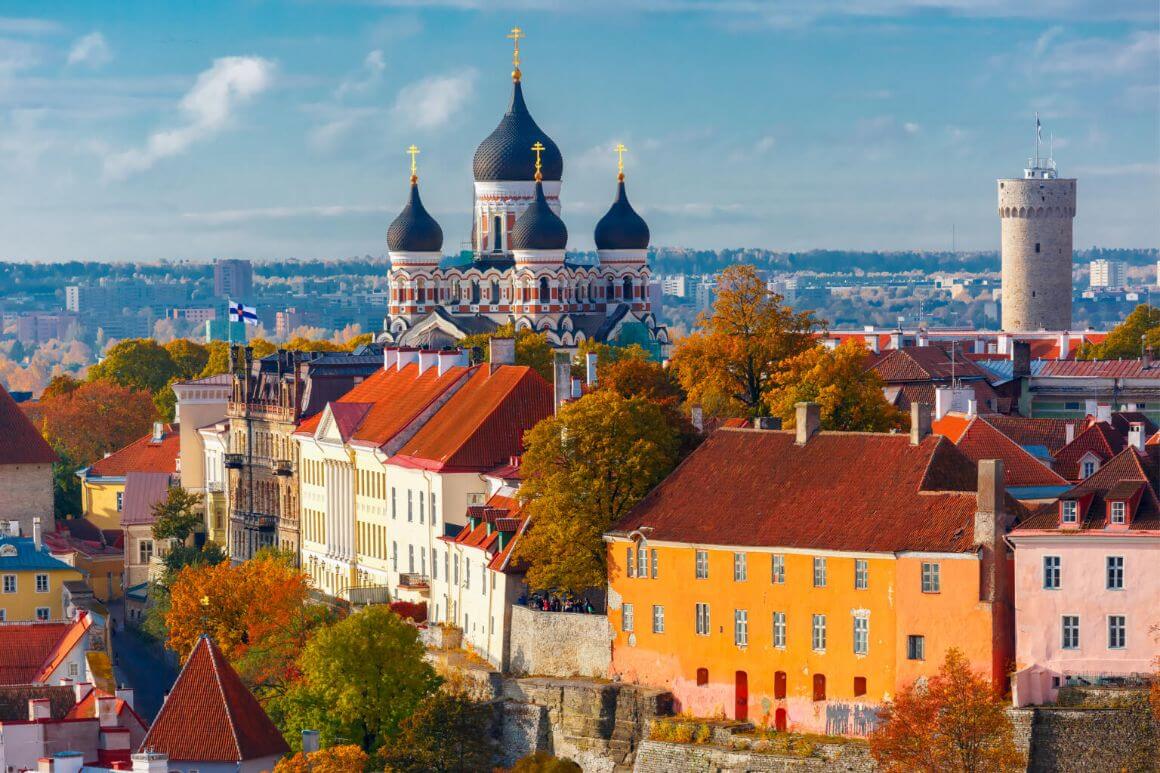
- Don’t miss out… on visiting Užupis, a bohemian artist collective in Vilnius, Lithuania, that has playfully declared themselves a sovereign republic. Read their constitution in 18 languages and get a unique passport stamp at their post office.
- Keep an eye out for… Soviet history. Baltic countries only gained independence in the early 1990s after the Soviet Union broke up and as a result, there’s tons of fascinating Soviet history to explore. Shoot AK-47s in Riga and discover the secret KGB office on the top floor of a hotel in Tallinn.
- The coolest hostel is… The Naughty Squirrel in Riga; an award-winning hostel with amazingly friendly staff and lots of fun events to get you socialising with your fellow backpackers. Easily the best hostel in Riga.
- The best food is found in… Tallinn, where modern Scandinavian and Baltic fine dining meet local home-cooking and traditional Medieval flavours.
Belarus
Europe’s last Dictatorship, Belarus is kind of like a weird, real life experiment based on the play/film “Goodbye Lenin” (the young protagonists are forced to conceal the collapse of the Soviet Union from their elderly grandma to spare her heartbreak). Whilst the rest of Eastern Europe has made significant steps forward over the past 30 years, poor Belarus remains trapped in absurdity.

However, what this means is that Belarus offers travellers a fascinating glimpse of a world now gone and the opportunity to kind of step back in time – or least experience an alternate reality timeline. The capital Minsk is quite accessible, welcoming and actually an under-rated tip for a city break. It is however painfully cold in Winter.
What to Know Before Visiting Belarus

- Don’t miss out… The city of Brest. It’s a lot more modern and organised than the capital of Minsk. Be sure to visit the monument to the defenders of Brest which is an extraordinary example of Soviet sculpture – it’s a massive, angry looking head jumping out a gigantic stone.
- Keep an eye out for…Communist monuments at every twist and turn. Look for big horrible buildings, brutalist paintings and the genuinely splendid metro stations. If you have time, visit Zair Azjur Bust Museum and Workshop for a who’s who of Belarusian Socialism.
- The coolest hostel is….Hostel Urban in Minsk – An urban hostel in Minsk that mixes good location, comfort There is a gym on site as well as tacky little souvenir shop.
- The best food is food in… Belarusian’s still consume a lot of traditional food of soups, pancakes and buckwheat juice. Grand Cafe is the oldest high end restaurant in Minsk where you can choose a local specialist or something more cosmopolitan.
Russia
What can I say about Russia that isn’t a tried albeit true cliche?! An enigma wrapped inside a pub quiz (or whatever) puts it mildly – this is without doubt one of the most fascinating and beguiling countries on earth.
Russia is vast and complicated. St Petersburg and Moscow are both classical cities with architectural wonders, rich histories, epic museums and very lively social lives. The natives may seem unfriendly but one analogy is to look at them as coconuts, milky, soft and sweet once you break the shell!
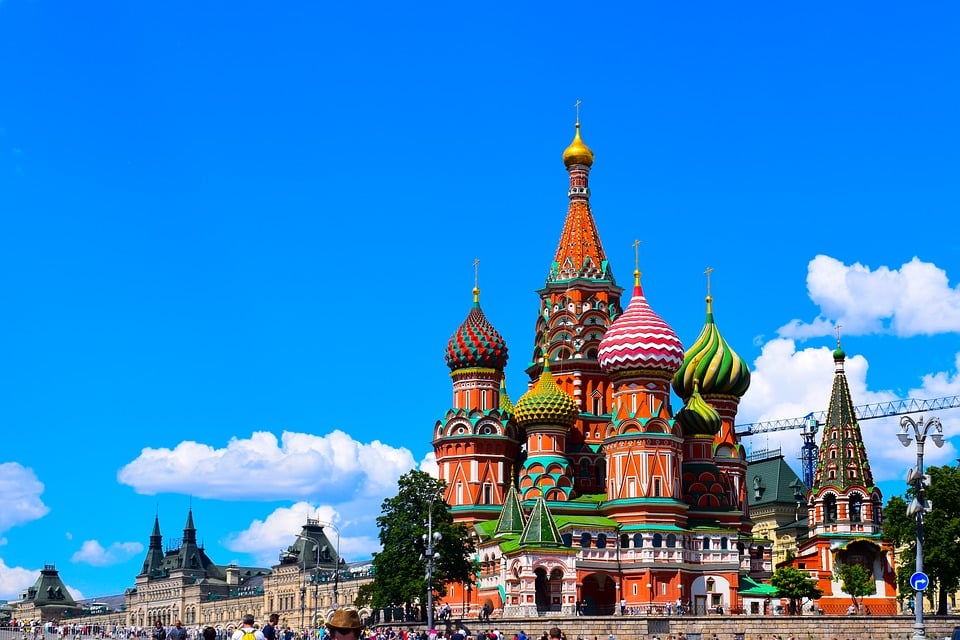
Outside of the big cities, Russia is pretty much unexplored by tourists (unless you count spies). The Trans-Siberian railway offers the chance to see a good chunk of the country through the window but to really get to know Russia, you need to venture into the interior and face the (considerable) language and cultural barrier. One of the quirkiest and darkest places to visit is Dargas Village – the city of the dead. The psychedelic coloured salt mines at Yekaterinburg are also worth a visit.
What to Know Before Visiting Russia

- Don’t miss out… The Tomb of Lenin. The preserved body of the original communist revolutionary lies in state in Moscow and to this day visitors still queue around the block to pay their respects.
- Know What’s Over-rated?…Some say the Trans-siberian railway a bit underwhelming. It’s a hell of a lot of railtime for minimal reward.
- The coolest hostel is….The Netizen Moscow Rimskaya hostel is the best place to stay in Moscow. Aesthetically it’s very impressive indeed and the looks are matched by the comfort standards. It’s also well located near to 2 metro stations.
- The best food is food in… Russian restaurants can be formal. Also note there is a ban on EU imports meaning food is very much seasonal. Check out the Stolovaya -Soviet-era-style canteens which are great value for non-gourmet, self-serve meals.
 Find the best neighbourhoods in Moscow with our guide.
Find the best neighbourhoods in Moscow with our guide.
 Plan your perfect trip with our Moscow Itinerary.
Plan your perfect trip with our Moscow Itinerary.
 Let our St Petersburg Hostel Guide help you find the a bed!
Let our St Petersburg Hostel Guide help you find the a bed!
 Do not miss out on these St Petersburg Places To Visit.
Do not miss out on these St Petersburg Places To Visit.
Ukraine
Rubbing right up against the great Motherland and sharing miles of border, the not yet fully discovered backpacker destination Ukraine is often dismissed by Westerners as “Russia-lite” or regarded as it’s little cousin. Whilst there are some undeniable cultural cross ties, this is nevertheless unfair and Ukraine is very much a nation in its own right.
The capital of Kiev is a revelation. The city scape is a hotchpotch of brutal communist-era towers as well as some truly elegant examples from the dynastic periods in Ukrainian history. Try to stay near the Khreshchatyk area as it makes getting around easier. There are some great Kiev hostels in this area.

Image: Nic Hilditch-Short
An unmissable day trip from Kiev is Chenorbyl – the site of the worst nuclear incident in human history. Worry not though, visits to the contamination zone are carefully regulated and perfectly safe.
Lyiv is also a charming city and was largely spared the Soviet-era concrete facelift that other cities suffered and therefore still feels decidedly “european”. Odessa is where Ukraineian’s go to spend warm summers. Situated on the Black Sea, Odessa is all beach life, parties and beautiful women during the summer months and notably more subdued throughout the colder ones.
Ukraine also has a truly banging Techno scene which has to be experienced if you get the chance.
What to Know Before Visiting Ukraine
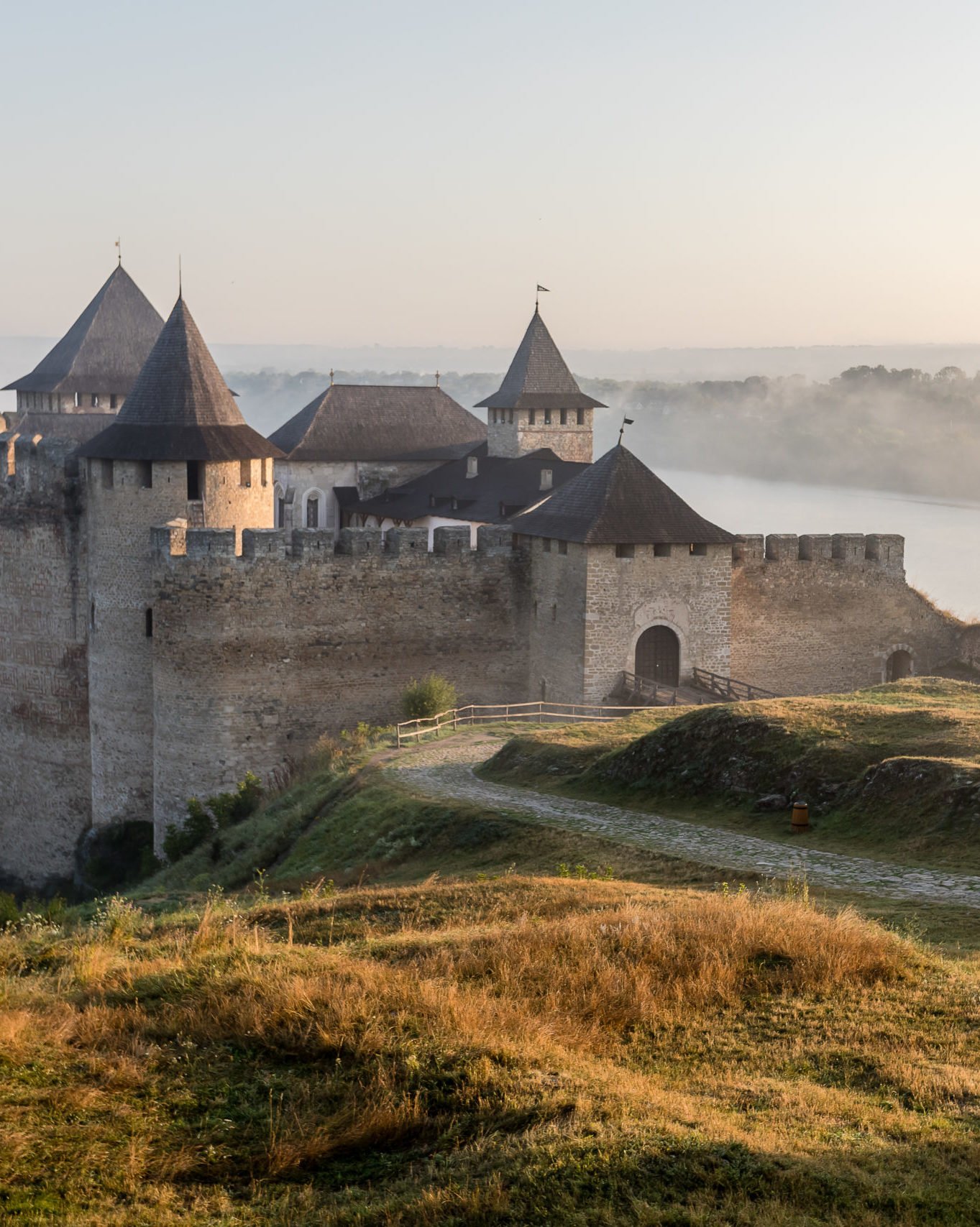
- Don’t miss out… Visiting Chernobyl. You can book a guided day tour from Kiev. You will not regret it.
- Keep an eye out for…Keep an ear out for proper underground techno parties. Kiev has a thriving rave scene which mixes genuine coolness with banging tunes. The most famous one, Cxema, has now become semi-legit so whilst not strictly “underground” you’ll still have a blast.
- The coolest hostel is….Dream Hostel in Kiev. It’s big and brilliant and has consistently been recognised as the top hostel in Ukraine. It has a bar and great common areas, is well located and there are even some bikes to rent.
- The best food is food in… The traditional restaurants are usually in basements, decorated with “peasantry” paraphernalia and the staff wear traditional dress. These places do excellent Borsch and are often the cheapest options.
Moldova
Tiny little Moldova (even as a Brit I can call Moldova tiny) is sandwiched between Romania, Ukraine and Belarus and is the kind of country that plenty of people don’t even know exists (seriously). Like many other small, forgotten countries though, Moldova packs in a hell of a lot of adventure for backpackers and is a true Eastern European tourism gem.

The capital of Chisinau is one of the most green, clean and leisurely capitals we have visited and is also within bussing distance of is Orheiul, or Old Orhei, Moldova’s most important architectural site.
Moldova also offers fine wineries, cave towns, castles as well as the obligatory Orthodox Monasteries. Best of all though is the Transnistria region, a self nominated “independent republic” which the rest of the world recognizes as being very much a part of Moldova – it has its own currency, border force and still has plenty of Soviet-era Lenin statues splashed around the cities.
Backpacking Georgia
As far as Eastern Europe goes, backpacking Georgia is high up on the list of awesome countries to visit in 2021 and beyond. Georgia is dotted with fun cities, hill-top monasteries, lush forests, and the Caucasus mountain range. Backpacking in Georgia is cheap, relatively easy, and truly feels like a real adventure destination. The hostel scene in Tbilisi is alive and well and there are loads of great things to do in the capital.
If you like hiking, the Caucasus are a world-class trekking playground with almost none of the traffic received by the Alps and the other mountains of Western Europe.
In addition to stunning mountains and outdoor pleasures, Georgia has several other things going for it. The country has amazing wine, great food, and some genuinely nice people. Somehow Georgia has stayed off the general radar of people backpacking Europe. The country is also becoming increasingly popular with digital nomads, due to the low cost of living.
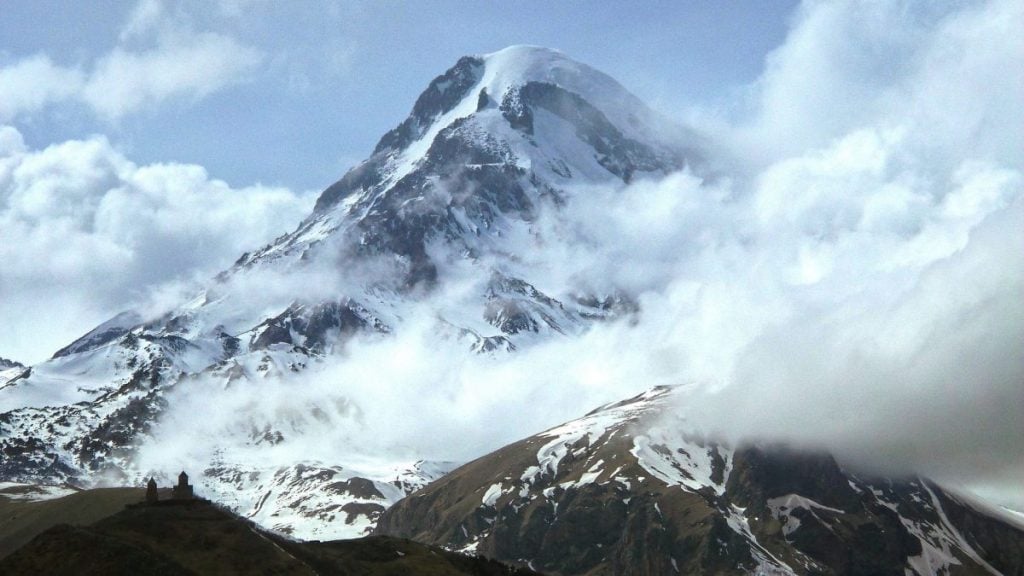
It’s just a shame that the two countries can’t seem to get along. For decades, Azerbaijan and Armenia have fought in skirmishes and small-scale wars over small parcels of land, the most heavily contested being Nagorno-Karabakh. The conflict has flared again in 2020 and whilst the conflict is not a nail-in-the-coffin to tourism, it certainly doesn’t help much.
What to Know Before Visiting Georgia
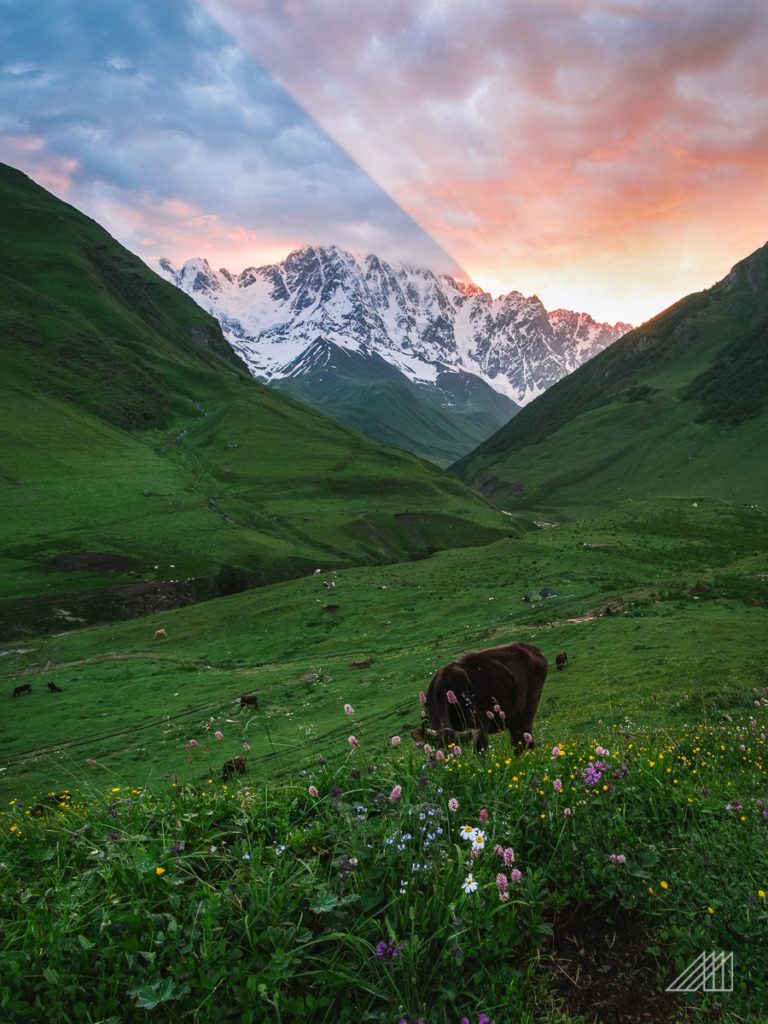
Photo: Ralph Cope
- Don’t miss out on…village-to-village hiking in the Svaneti region. It’s like a European version of the teahouse treks in Nepal with way fewer tourists.
- You know what’s overrated…Batumi. It’s just a bunch of casinos crowding a mediocre beach. The coastline and villages south of Batumi are much better.
- The coolest hostel is…Fabrika Hostel & Suites (Tbilisi) – a hip hostel with enormous and clean facilities. The main lounge area is very cool and the kitchen is stellar.
- The best food is found in…the subterranean wine bars and dive bars. Eat khinkali and drink some delicious (and cheap) local wine. It’s worth visiting Tbilisi for a few days solely for these.
Backpacking Armenia
Depending on who or what map you ask, Armenia and Azerbaijan are technically in Asia. However, culturally and politically they are in Eastern Europe which is why we have included them – and also because the Ukraine, Georgia and the Caucasus make for an awesome road trip.
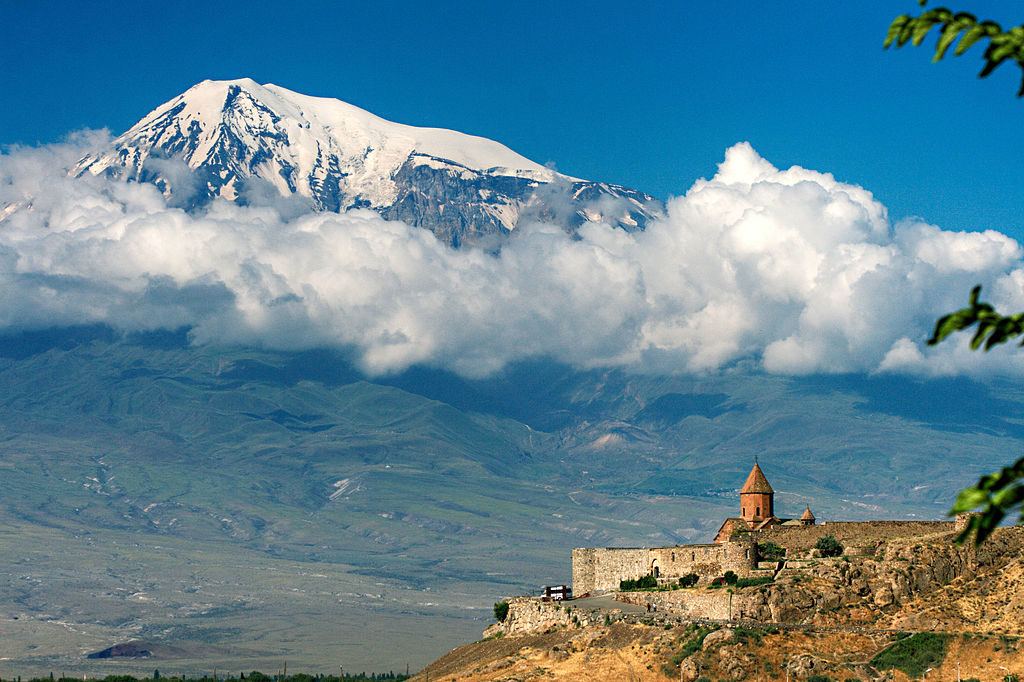
Photo: Kohrvirab MrAndrew47 (WikiCommons)
Armenia is simply put, beautiful, quaint and bloody unique. Here you will find mountain monasteries (some of the oldest in the world), some bloody spectacular Roman and ancient ruins and excellent trekking and camping.
The capital city of Yerevan is also very cool mixing ancient streets with ugly/beautiful high rises from the Soviet era. Starting your trip in Armenia by travelling through Yerevan is an easy choice.
Armenia is a dream destination for backpackers in search of true adventure.
What to Know Before Visiting Armenia

- Don’t miss out… Armenia has some of the best roman ruins in the world. The Temple of Garni is amazingly well preserved, and the back-drop is dramatic. It is well worth the trip so do make the effort.
- Keep an eye out for… Wineries and tasting cellars. Armenia makes some great wine and imports some of the best stuff from Georgia too. These are scattered throughout towns and cities and the plonk on sale is perfectly affordable.
- The coolest hostel is…. Youth Hostel in Yerevan. It’s modern (rare among Yerevani hostels) spacious and puts on a big breakfast. The kitchen facilities are decent and the open air socialising area is great for making friends.
- The best food is food in… One thing you must try is Armenian Pizza (Lahmacun) which is flatbread, no cheese, topped with tasty fillings. Whilst mince lamb is typical, vegan options are available. The best ones we found were served at Mer Taghe near Freedom Square.
Backpacking Azerbaijan
Azerbaijan is like a weird love child spawned from an awkward drunken fumble between the Soviet Union and the Middle East and has a despotic political system to match. The capital Baku is genuinely fascinating, you can find Ottoman mansions, the token grey Soviet monoliths and some of the boldest modern architecture outside of the Gulf.
Other Azerbaijan highlights are the mud volcanoes’ as well as a house made entirely out of bottles in the town of Ganja.
Xinali (neat Quba) is a remote, mountain town and perhaps the most rural place I have ever been. There is plenty of good, solitary hiking to be had up in the mountains. You may encounter the odd Shepherd, soldier or Shepherd Soldier. Be wary of packs of mad dogs and take care not to venture too near to the Russian border as they have been known to shoot indiscriminately.
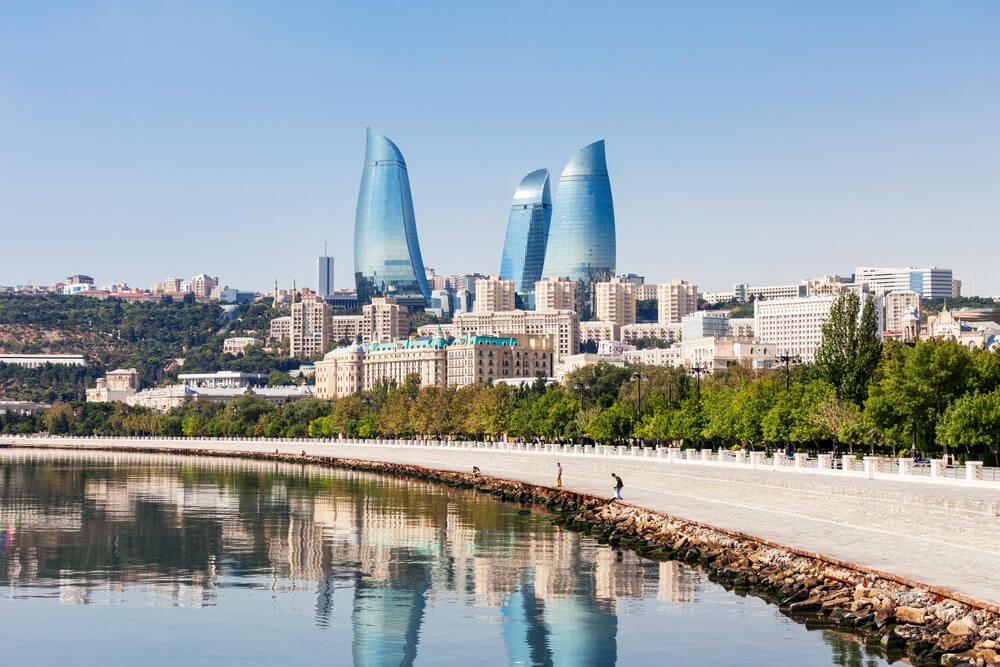
Depending on the current political situation you may or may not be able to cross the border from Armenia into Azerbaijan. Other than that, Azerbaijan is pretty safe.
Unless you are combining it with a trip to Armenia or Georgia, a trip to Azerbaijan may feel a bit underwhelming when compared to other destinations in Eastern Europe.
Getting Off the Beaten Path in Eastern Europe
Getting Off the Beaten Path on your Eastern Europe adventure is very easy. The westernmost capital cities do get a fair few backpackers but that’s about the extent of it.
For example, if you venture outside of Budapest and into other parts of Hungary you may well not encounter a single tourist. Then, if you go to Ukraine or Moldova you will probably only ever see other tourists as your hostel or if you take a popular trip.
Note that when you do exploring off the beaten path destinations, language barriers may become an issue. English is not widely spoken in this part of the world so if you can master a bit of a Russian, good for you.

We’ve tested countless backpacks over the years, but there’s one that has always been the best and remains the best buy for adventurers: the broke backpacker-approved Osprey Aether and Ariel series.
Want more deetz on why these packs are so damn perfect? Then read our comprehensive review for the inside scoop!
View on OspreyTop Things to Do in Eastern Europe
Now to the things backpackers really care about: what to do and what to see. With so many different countries, there are plenty of hidden gems to explore. We’ve listed the best ones.
Ruin Pub Crawl in Budapest
Following the collapse of the Soviet Bloc in 1989 Hungary entered into a decade long economic recession and the grand city of Budapest fell into a state of decline and decay. Visionary publicans decided to take up in the city’s beautiful (but deteriorating) old buildings and open up pubs, bars and clubs amid the wreckage.

The quite literal “ruined pubs” were cheap, lively and pretty lawless drinking dens and centres of fun. Their reputation soon spread around the world. These days, the ruined pubs have been tidied up a bit (owing to both an investment of cash as well as party pooping safety regulations) so you don’t need to worry about the ceiling collapsing anymore. Whilst the dillipadation is now semi-faux, and the clientele a mixed bag (success brings with it, busloads of douchebags) you can still have a lot of fun checking out the ruined pubs of Budapest.
You know the drill, you can join a pub crawl at your hostel and visit all the popular, backpacker places or you can go your own way and try to seek out where the authentic vibes are at.
Chernobyl
The Chernobyl Nuclear reactor was the setting for the worst nuclear accident in human history (Hiroshima and Nagasaki were not accidents). In 1984 the main reactor exploded causing a radiation leak which has caused 1000’s of fatalities in Ukraine, Belarus & Russia.
A Chenorbyl tour takes you to the contamination zone and the “model Soviet” town of Pripyat which was abruptly evacuated and abandoned forever a few days after the blast. The experience is eerie and fascinating. You must join an organised tour to visit Chernobyl and these leave daily from Kiev.
Auschwitz
Yes, Eastern Europe does have it’s a fair share of “dark tourism” attractions and none more poignant than Auschwitz-Birkenau. Situated about 50 km from the Polish city of Krakov, this was the single biggest Nazi concentration & death camp and it is estimated nearly 1 millon Jews, Roma, Slavs & polital enemies of Nazism were murdererd here.
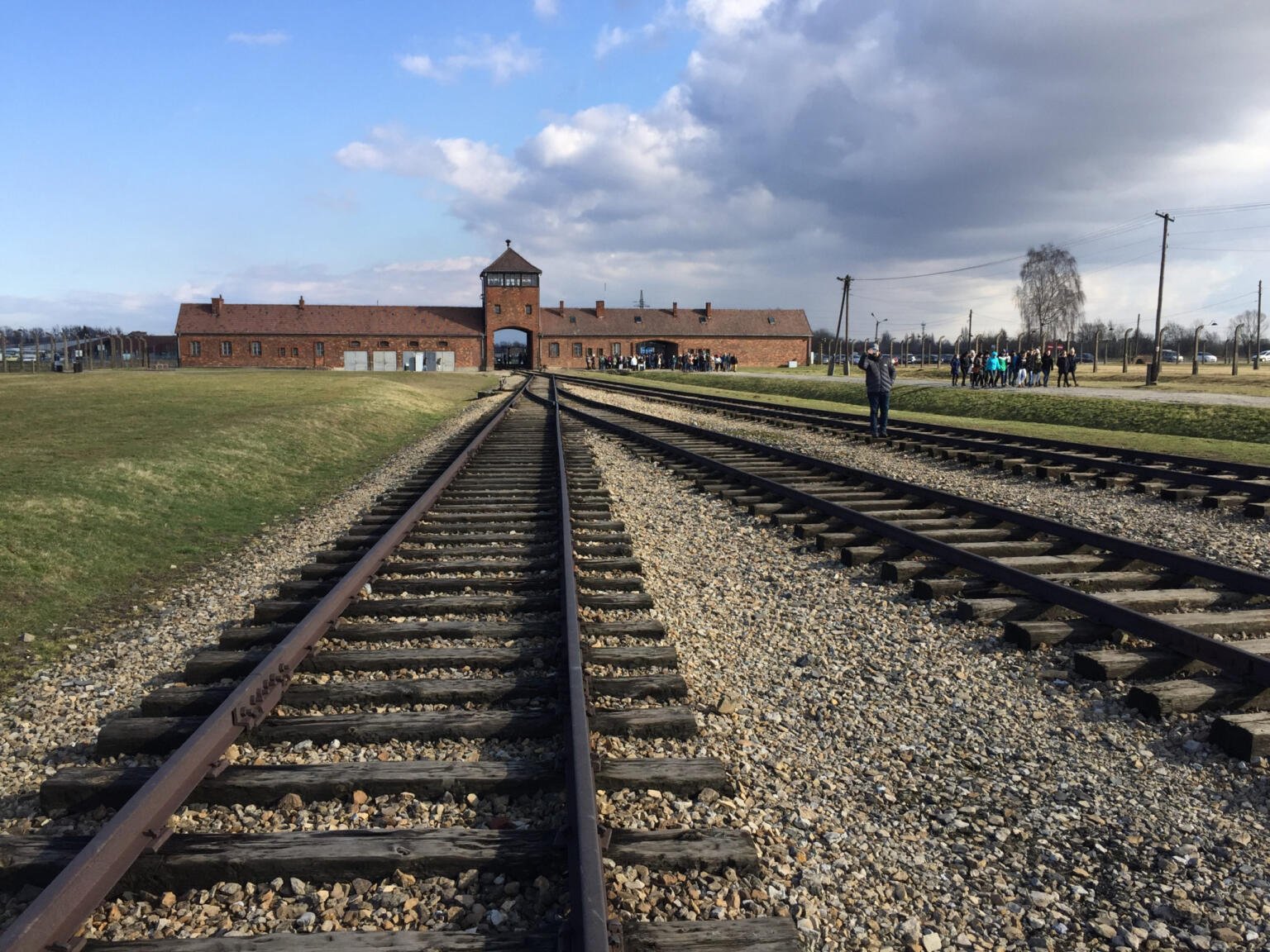
Some may describe a visit here as morbid but I disagree. In 2021, it feels more important than ever to remind ourselves what our species is capable of doing when we let intolerance, hatred and evil get the better of us. Seeing it for yourself lends this tragic period in history a gravity which even the best history books can’t express.
An Electronic Music Festival
One thing Eastern Europe does seriously well, is proper Electronic Music (as opposed to the Calvin Harris type shit). My theory is that after emerging from behind the Iron Curtain relatively recently, there is a serious appetite for hedonism and creativity.
Whether you are into Techno, Psytrance, House or anything in between, there are parties happening right across this region. If you visit in summer, try to catch a proper festival where you can rub shoulders with the locals losing their shit in a glorious orgy of repetitive beats and extra curricular chemicals.
The cool kids head to Apokalypsa near Brno for Czechia’s premier Techno fest, OZORA in Hungary is the 2nd biggest and best Psytrance festival on earth and if you make it to Russia, then Alfa Future People is there to answer to Tommorowland (big production, dodgy drugs and popular, EDM headliners).
Transiberian Railway
One of the world’s great railway journeys, the Transiberian express crosses the Siberian peninsula connecting St Petersburg with Beijing in China (via Mongolia).

Whilst technically much of this journey takes place in the Asian part of Russia we couldn’t not include it. If you decide to do the Russian part only, then it starts in St Petersburg, takes in Moscow and then crosses Russia all the way to Vladivostok. Some of the journey is monotony, other parts are stunning such as the route along Lake Baikal
You can use it as hop on hop off (provided you book this correctly) and are not obligated to do the whole country at once, if at all, meaning you can explore a good bit of the gigantic land of Russia. The true magic in taking this epic journey, is the connections you make on the train whether it’s sharing salami with Russian soldiers or playing cards with Mongolian migrant workers.

Wanna know how to pack like a pro? Well for a start you need the right gear….
These are packing cubes for the globetrotters and compression sacks for the real adventurers – these babies are a traveller’s best kept secret. They organise yo’ packing and minimise volume too so you can pack MORE.
Or, y’know… you can stick to just chucking it all in your backpack…
Get Yours Here Read Our ReviewBackpacker Accommodation in Eastern Europe
Finding accommodation in Eastern Europe is pretty similar to Western Europe. The EU and Baltic states have a ton of hostels in the big destinations and scatterings in the smaller ones. Airbnb is well established here and can be very reasonable.
Once you venture outside of the EU zone, note that hostels can be slightly less frequent and Airbnb may not have the same amount of options.
Couchsurfing in Eastern Europe can be absolutely great. Don’t bother trying it in Budapest, Prague or in “big” destinations but do give it a whirl in places that don’t get too many visitors. Not only do you get a free bed, but your host may be willing to act as a translator and even tour guide if you’re really lucky.
The Best Places to Stay in Eastern Europe
| Country | Hostel | Why Stay Here? |
|---|---|---|
| Czech Republic | Hostel Elf – Prague | Great vibes and amazing crowd. |
| Slovakia | Wild Elephants – Bratislava | Party hostel with beer-pong and table football. |
| Hungary | Maverick Lodge – Budapest | Clean, comfortable and reasonably priced. |
| Poland | Oki Doki Old Town Hostel Warsaw | Great location in Warsaw old town. |
| The Baltics | Jimmy Jumps House | Award winning hostel. |
| Belarus | Hostel Urban – Minsk | Good location, helpful staff and an onsite gym. |
| Russia | Netizen Moscow Rimskaya | Aesthetically lovely and well located. |
| Ukraine | Dream Hostel – Kiev | Big hostel, recognised as best in Ukraine multiple times. |
| Moldova | Hostel Amazing Ionika | Cosy hostel with very helpful staff. |
| Georgia | Fabrik Hostel & Suites (Tblisisi) | Hip hostel with good facilities. |
| Armenia | Envoy Hostel | Modern, spacious and does an epic breakfast. |
Eastern Europe Backpacking Costs
Costs vary quite a lot across Eastern Europe although they are consistently lower than in Western Europe. Generally, you’ll find it is home to some of the best cheap travel destinations in Europe.
We think as a rule of thumb, $30 – $50 per day is realistic.
Public transport is affordable, supermarkets and grocery stores can be very cheap if you stick to domestic products. Alcohol is also cheaper than back in Western Europe IF you stick to the local stuff.
A Daily Budget For Eastern Europe
| Country | Dorm Bed | Local Meal | Bus/Train Ride (3 hours or less) | Average Daily Cost |
|---|---|---|---|---|
| Georgia | $10- $15 | $5-10 | $2-5 | $25-45 |
| Czech Republic | $18 – $20 | $10-$15 | $5 – $10 | $40 – $60 |
| Slovakia | $18 -$25 | $10 – $12 | $5 – $10 | $45 – $55 |
| Hungary | $10 – $20 | $7 – $8 | $4 – $8 | $30 – $50 |
| Poland | $15 – $18 | $6 – $8 | $4-$6 | $30 – $40 |
| Latvia | $13 – $15 | $5 – $8 | $4 – $6 | $25 – $35 |
| Lithuania | $12 – $15 | $5 – $8 | $3 – $5 | $20 – $25 |
| Estonia | $13 – $15 | $7 – $8 | $4 – $5 | $28 – $35 |
| Russia | $10 – $13 | $5 – $7 | $3 – $5 | $20 – $25 |
| Ukraine | $8 – $13 | $5 – $8 | $2.50 | $20 – $25 |
| Belarus | $9 – $12 | $4 – $5 | $3 – $6 | $20 – $25 |
| Moldova | $7 – $8 | $4 – $5 | $2 – $4 | $15- $20 |
| Armenia | $6 – $9 | $4.50 | $2.50 | $15 – $20 |
| Azerbijain | $6 – $10 | $4.50 | $2 – $4 | $15 – $20 |
Money in Eastern Europe
There are 14 different currencies in use across Eastern Europe (15 if you count Transnistria in Moldova). Therefore getting your head around exchange rates is a bloody pain. We recommended using a good app like XE Currency converter.
Card payments are widely accepted in the EU states, (I used mine a lot in Ukraine) but don’t always count on it elsewhere. In Armenia, Azerbaijan & Russia, some retailers may prefer cash or levy transaction fees if you pay by card.
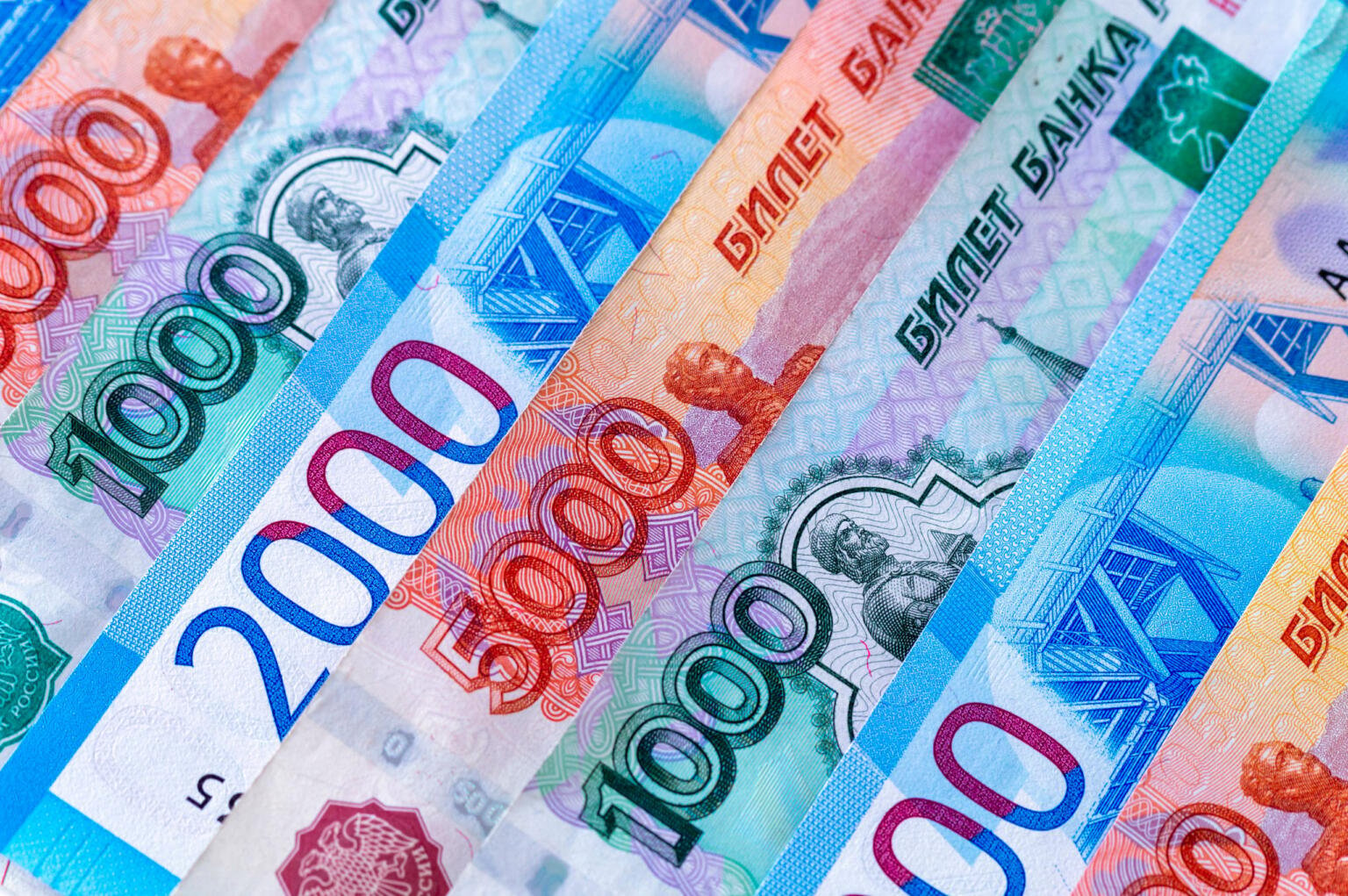
ATM’s are widely available across the region but do become less prominent in rural areas such as the mountains of Armenia. Also note that occasionally ATM’s reject bank cards so do bring a few to choose from. ATM fees vary from country to country but as a rule, use a prepaid travel card which offers favourable deals on withdrawal fees – Monzo and Revolut are both useful. Check out our travel banking guide for more info.
It is also worth carrying some cash with you – particularly if you plan on going into the mountains, trekking or taking the Trans-Siberian Express. A good bet is to carry Euros as these are popular across the region and you can often find somebody willing to change them with you.
Travel Tips – Eastern Europe on a Budget
To safe money, the usual backpacker rules apply. Try to Couchsurf some of the time, cook most of your own food and buy only local produce at supermarkets. Supermarkets also sell booze very cheaply so if you want to get loaded, this is the affordable way to do it!
Hitchhiking is also quite possible. Just bear in mind you will probably be unable to communicate with whoever picks you up.
The inter-rail train network runs through the western part of Eastern Europe so purchasing a ticket can prove to be good value.
Why Should You Travel to Eastern Europe with a Water Bottle?
Plastic washes up on even the most pristine beaches… so do your part and keep the Big Blue beautiful!
You aren’t going to save the world overnight, but you might as well be part of the solution and not the problem. When you travel to some of the world’s most remote places, you come to realise the full extent of the plastic problem. And I hope you become more inspired to continue being a responsible traveller.
Plus, now you won’t be buying overpriced bottles of water from the supermarkets either! Travel with a filtered water bottle instead and never waste a cent nor a turtle’s life again.

Drink water from ANYWHERE. The Grayl Geopress is the worlds leading filtered water bottle protecting you from all manner of waterborne nasties.
Single-use plastic bottles are a MASSIVE threat to marine life. Be a part of the solution and travel with a filter water bottle. Save money and the environment!
We’ve tested the Geopress rigorously from the icy heights of Pakistan to the tropical jungles of Bali, and can confirm: it’s the best water bottle you’ll ever buy!
View on REI Read the ReviewAnd Speaking of Plastic… Get an eSIM For Eastern Europe
You know those tiny pieces of plastic you used to use to connect yourself to the internet abroad? Sim Cards I think they were called? Well yeah, we’re ditching those as well.

These days, wherever you go in the world an eSIM is by far the best way to stay connected from the minute you land. You can download an eSim before you leave home and then activate it when you are still sitting on the plane waiting to disembark.
You skip all the hassle of trying to figure out different providers and navigating airport prices to make sure you’re not getting scammed.
Of all the many eSim providers out there, we suggest Jetpac. Jetpac works just like an app: you download it, pick your plan, and BOOM! You’re connected before the pilot says you can stand up.
JetPac eSim Packages For Eastern Europe
1GB – 4 Days – $1
5GB – 30 Days $7
10GB – 30 Days – $13
Best Time to Travel to Eastern Europe
Choosing when to visit Eastern Europe is as important as choosing where to go. Winters across the region are serious fucking business being cold, dark, long and snowy.
The Russian winter presumably needs no introduction (although somehow both Napoleon and Hitler failed to take it into account), and do remember that the Baltic states are so far North they only get a splatter of daylight during the depths of winter much like you may experience in Scandinavia.

I visited Ukraine in November and needed to wrap up very tightly but was comfortable enough. Broke Backpacker founder Will had to re-arrange his plans in Georgia after the mountain villages they wished to visit were “snowed-in”.
Summers are typically mild to hot and can get a bit sticky. Summer is the prime music festival season in Hungary, Czech Republic and Poland as well as a wonderful time to visit the Baltics. If you stop by the Black Sea during July and August, expect it to feel like one big swimwear shoot.
Spring is also very pleasant (what’s new there though?) and a particular nice time to visit Armenia and Western Russia.
Festivals in Eastern Europe
Despite their frosty outwards demeanor, the peoples of Eastern Europe all share a real zest for life which is perhaps best encapsulated in the many festivals which take place across the region.
From rock music, to Pagan sacraments to foodie-free-for alls, there is an Eastern European festival for everybody.
Note the big Soviet-era “workers” festivals are no longer such a big deal. However, my friend was in Russia for May’s Victory Day which commemorates the Russian victory over the Nazi’s in WWII. His experience of it wasn’t entirely pleasurable at all but if you’re into a delightful mixture of military garb, copious boozing and ultra nationalism, then fill your boots!
Orthodox Christmas
Did you know that the Orthodox Russian, Ukranian & Armenia Churches celebrate Christmas almost 2 weeks after the west?! This is owing to a dispute over the exact date of birth of Christ (and I have to say, the Orthodox case is historically more compelling). That means you may get the chance to celebrate Christmas twice. Yay!
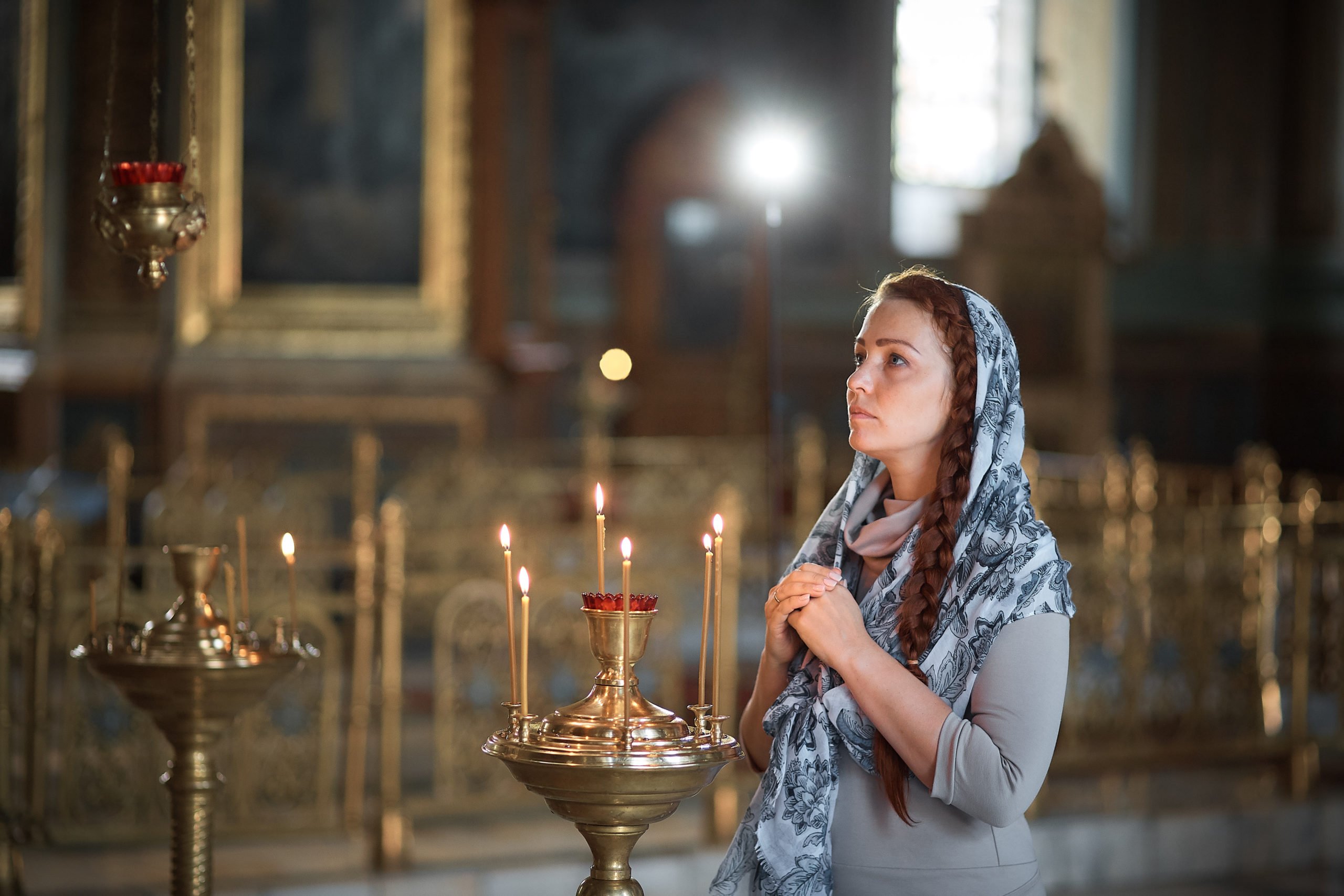
Orthodox Christmas can still be quite “spiritual” and people still attend the midnight mass and spend the day fasting before celebrating on Christmas evening. If you are visiting in January, be sure to work this into your Eastern Europe itinerary.
Midsummer/St John’s Day – Estonia, Lithuania, Latvia
The Baltic states are so Northerly that they really do feel the seasons. Whilst not as extreme as Scandinavia, in winter they do get short days whereas in summer, the days seem to stretch on forever. As such, midsummer is a big deal and major case for celebration. The Baltic Midsummer festivals amounts to days of merry making and fun in the sun (which never seems to set).
At the midsummer festivals you can get a taste of what European life was like in Pagan times when people celebrated harvests, seasons and things that actually mattered rather than offering empty platitudes to middle eastern prophets who may or may not have ever even lived let alone risen from the dead to live again.
You can experience this in each of the baltics. However, Lithuania is notable as the country has retained a lot of it’s antiquated pre-Christian traditions and Tallinn is another good bet as the days are just so damned long!
Czech Beer Festival – Czech Republic
This one does what it says on the tin, it’s a festival celebrating beer by drinking beer (but not from tins). Boom. There is lots of food, music and (naturally) more than 150 beers from around the country are on offer in Prague from mid- to late May.

Jewish Culture Festival – Poland
You may already know that Poland’s Jewish population was decimated by the Nazi’s. Still, during June & July Kraków rediscovers its rich Jewish heritage by staging packed out week of music, art exhibitions and lectures .
Coffee Festival – Ukraine
I was very surprised and impressed by how much of a big deal coffee is in Ukraine. Each September, Lyvi throws it’s wonderful “coffee festival” where baristas’ and pop-ups from across the region serve roasted beans from around the world. There are also bike rides, film showings and lectures all about the black stuff.
What to Pack for Eastern Europe
Dress standards and style preferences are mostly very similar to those in the west. Jeans, t-shirts, trainers whatever. However, do note that some regions are more conservative so perhaps bear in mind “modesty values” in parts of Russia, in Armenia and in Azerbaijan.
What you pack will largely depend on the season in which you are visiting. In summer, you can expect warm/hot days across the region. However, do pack a rain jacket as it can get unexpectedly wet.
If you visit in winter, then do prepare for the cold. Pack a thermal under-layer, a warm waterproof coat, a hat, gloves and appropriate footwear. Failure to do so could ruin your trip.

Travel Security Belt
This is a regular looking belt with a concealed pocket on the inside – you can hide up to twenty notes inside and wear it through airport scanners without it setting them off.
Microfiber Towel
Hostel towels are scummy and take forever to dry. Microfibre towels dry quickly, are compact, lightweight, and can be used as a blanket or yoga mat if need be.

Petzl Actik Core Headlamp
A decent head torch could save your life. If you want to explore caves, unlit temples, or simply find your way to the bathroom during a blackout, a headtorch is a must.
‘Monopoly Deal’
Forget about Poker! Monopoly Deal is the single best travel card game that we have ever played. Works with 2-5 players and guarantees happy days.
Hanging Laundry Bag
Trust us, this is an absolute game changer. Super compact, a hanging mesh laundry bag stops your dirty clothes from stinking, you don’t know how much you need one of these… so just get it, thank us later.
Staying Safe in Eastern Europe
The good news is that Eastern Europe is more or less as safe as it’s Western counterpart. Petty crime does happen but is not especially endemic and most of the region is currently enjoying political stability.
However, there are still some things to take into account. First up, driving standards are a bit rowdier than back west (and drink driving is more popular) so take care if you hire a vehicle or cross a road…
In Russia, minority travellers and same sex couples have reported hate incidents and violence especially in St Petersburg. It may also seem sensible to keep a lid on your political opinions when travelling in the Russo sphere of influence. Oh, and note that Russian, Moldovan officials are not above a bit of extortion.
Belarus is, of course, a cesspit of corruption so stay out of trouble, avoid political demonstrations and even discussions.
There are also active conflict zones in the Crimea (Ukraine/Russia) and the Armenian/Azerbijaino border did see some heavy shelling at the back end of 2019. It is sensible to avoid these areas altogether.
One other danger in parts of the region during winter, is falling asleep outside after heavy drinking. This is a particular problem in Moscow and Minsk and each year lives are lost to hypothermia in this way.
Sex, Drugs, and Rock ‘n’ Roll in Eastern Europe
Eastern Europeans do love a good party. Firstly, drinking culture is thriving here (in fact it’s actually a bit of a problem) and there is no shortage of bars, pubs and clubs. The most popular drinks are beer and vodka, which is ubiquitous in the Russo-sphere. Vodka is generally poured quite liberally so do take care not to overdo it.

Drug use is not as high as in Western Europe and alcohol is still very much the intoxicant of choice. However, speed and amphetamines are still prevalent in the club and rave scene. Note that penalties for use and possession can be quite severe and do not even think about crossing borders with any substance.
Eastern European women are world renowned as some of the, if not the, most beautiful. In fact, the region has become a bit of an underground sex tourism hotspot which is not something we advocate in any way.
Dating a native though (of either sex), can be a great way to really experience the culture and even wind up with a new local family! Note that gender roles are more “traditional” and dating mores are far more conservative than what you might be used to.
Do bear in mind that homosexuality is not widely accepted in much of this region.
Travel Insurance for Eastern Europe
Whilst travel insurance is not a mandatory requirement for Eastern Europe, it is something you may wish to consider before you leave home. Remember that illness can strike at any time and that loss and theft does occur.
ALWAYS sort out your backpacker insurance before your trip. There’s plenty to choose from in that department, but a good place to start is Safety Wing.
They offer month-to-month payments, no lock-in contracts, and require absolutely no itineraries: that’s the exact kind of insurance long-term travellers and digital nomads need.
SafetyWing is cheap, easy, and admin-free: just sign up lickety-split so you can get back to it!
Click the button below to learn more about SafetyWing’s setup or read our insider review for the full tasty scoop.
How to Get into Eastern Europe
One popular point of entry into Eastern Europe is via the porous, Austrian land border. There are trains form Vienna headed towards Bratislava, Budapest and Prague.
A more popular option is to fly in and the capital cities of each country are well served. The budget carriers offer very cheap routes to Prague, Budapest & Bratislava. There are even budget carriers going to Ukraine, Russia and Armenia.
Entry Requirements for Eastern Europe
Each country has its own sovereign border and as such entry requirements do vary quite a bit. Hungary, Czech Republic, Slovakia, Lithuania, Latvia, Estonia and Poland are in the EU so standard Schengen Rules apply. Ukraine’s current entry policy mirrors that of the EU states and Georgia grants a Visa on Arrival to most Western Passport holders.
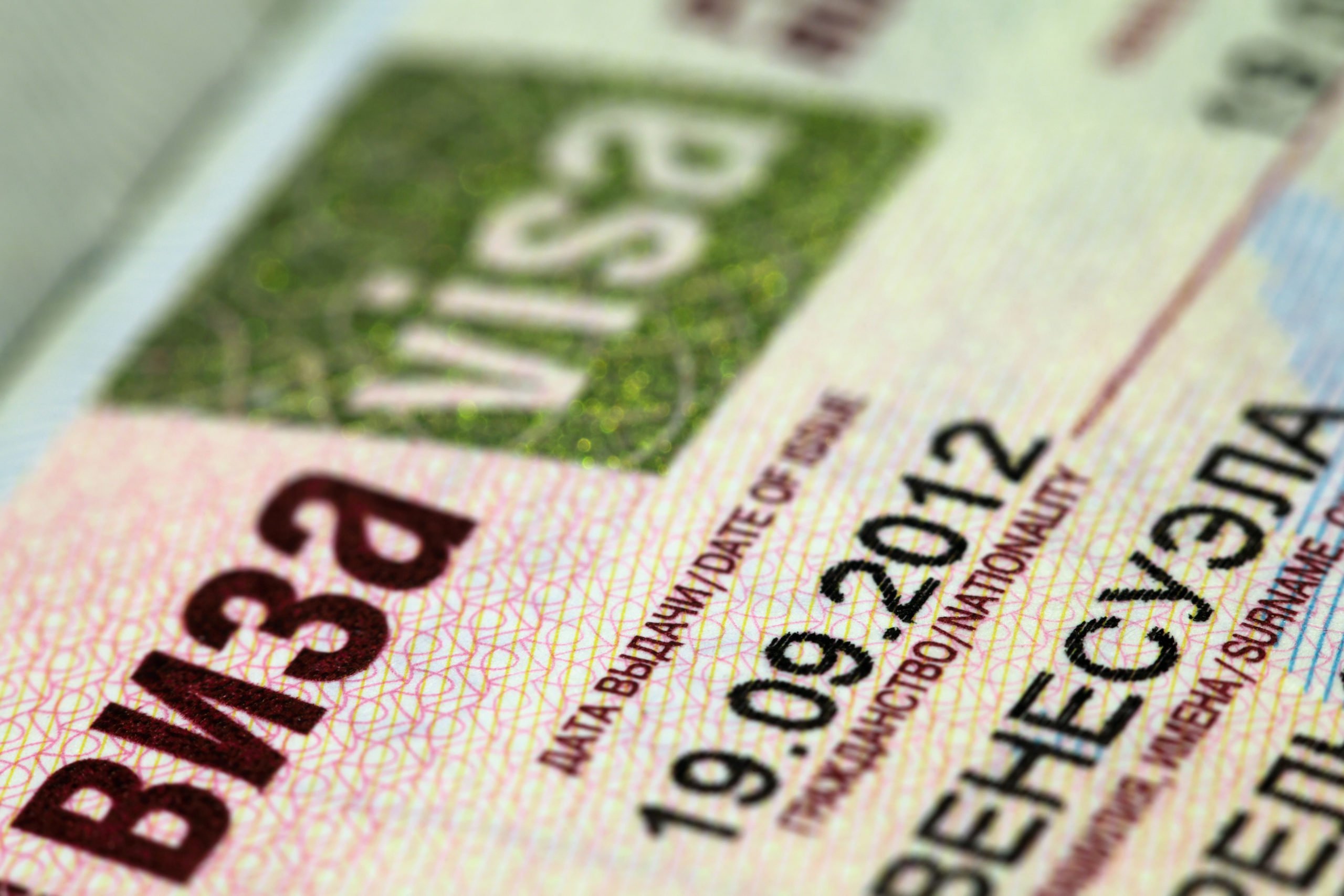
If you intend to visit Russia from pretty much anywhere, note that the Visa process is not easy or pleasant. You need to obtain a full visa in advance and will have to attend an appointment (most likely in your nation’s capital) for an interview and biometric screening. If you are intending to travel on the Trans-Siberian railway, you may also need a multiple entry visa depending on your exact itinerary.

Get 15% OFF when you book through our link — and support the site you love so dearly 😉
Booking.com is quickly becoming our go-to for accommodation. From cheap hostels to stylish homestays and nice hotels, they’ve got it all!
View on Booking.comHow to Get Around Eastern Europe
The EU part of Eastern Europe is quite well connected by rail and you can get an Interrail pass and use this as a “hop-on hop-off” service. The bus service between these countries is also pretty robust and can be as fast as the train if you find a “limited stops” carrier. The open, Schengen borders also make travelling between these countries easy and seamless.

However, things change once you leave the Schengen Zone. There are proper borders in place between all over countries and you will need your passport, any appropriate visas and may occasionally be subject to questioning. If you plan to travel overland then bus is the best way to do it although do note there is no one single operator covering the entire region.
Within cities, trams and metro are the fastest, cheapest ways to get around and you can often even find reasonably priced taxis if you are willing to haggle a bit. The operator Flixbus runs services around parts of Eastern Europe.
Working in Eastern Europe
Eastern Europe isn’t exactly a dream destination for expats and economic migrants. Wages are a lot lower than in the west and to be honest, human traffic generally flows the other way. That said, many western corporations now have offices in the region and securing a posting can offer the chance to live in a cheap country whilst cashing a western paycheck.
If you can make money online, living in Eastern Europe as a digital nomad is not a bad idea. The region is affordable meaning your hardly hustled dollar will go a lot further than they would back home. The standard of living is also perfectly comfortable and the region is good ole’ fun.
Note that Estonia has taken the forward thinking step of introducing “E-Citizenship” and is encouraging digital nomads from all over the globe to register business’, and live in the country.

A new country, a new contract, a new piece of plastic – booooring. Instead, buy an eSIM!
Jetpac eSIMs work just like an app: you download it, pick your plan, and BOOM! You’re connected the minute you land. It’s that easy.
Read about how e-Sims work or click below to see one of the top eSIM providers on the market and ditch the plastic.
Grab an eSIM!Work Visas in Eastern Europe
The EU countries are open for other EU citizens to come to live and work. Note that if you are a non-EU citizen planning to work in an EU country, each one sets its own work visa requirements and “Schengen rules” do not necessarily apply.
Elsewhere, pretty much everybody will need a work visa. These can be painfully bureaucratic (we’re blaming the communist legacy for that one) and vary from one country to the next. Typically though, you will need an offer of employment and in some cases, will need to demonstrate some extraordinary ability and that the job cannot be filled locally.
As above, the notable exception is the Estonian E-Visa.
Teaching English in Eastern Europe
Like anywhere in the world, there is always a demand for good, native English teachers in Eastern Europe. Demand, requirements and conditions for TEFL teachers in Eastern Europe varies a lot between countries.
In Russia, degrees are not required but are preferred. Pay varies from $1000 – $15000 which is enough to get by and save a little. Note that the currency is VERY volatile so it may be worth changing your salary to your home currency ASAP.
The EU countries tend to have stricter minimum requirements for teachers (you will probably need a degree) and yet typically pay the same as in Russia.
Armenia takes English language learning very seriously so teachers are especially welcome. A degree is not required and the pay ranged from $1000 – $15000 which is a decent wedge in the country.
What to Eat in Eastern Europe
Food glorious food. Cuisine from this region varies quite a lot the further you venture. However, there are some pretty common themes – Eastern European food is generally carnivorous, hearty and filling (the kind of thing a hard working peasant farmer would need after a day toiling out in the cold).
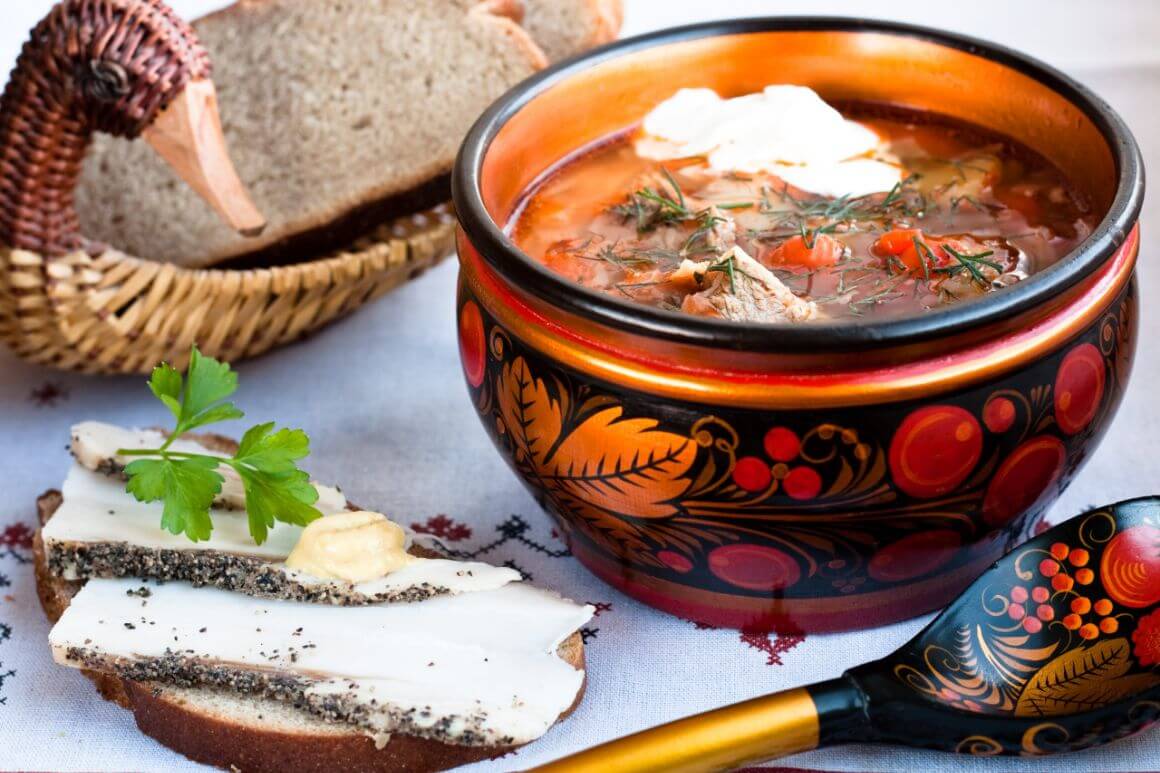
The Baltics do awesome sea-food and even have several sea-food festivals going on throughout the year. Let’s take a look at some regional delicacies and local favourites.
Goobki (Cabbage roll) – (Poland) – These are just delicious. Rolled up Cabbage leaves packed with either meat or veg with spices.
Borsch – (Soup) – Borsch is ubiquitous across the region and particularly popular in Russia and Ukraine. Warm beetroot soup.
Chicken Kiev – (Ukraine) – Chicken fillets in breadcrumbs. You may already know these but why not try one in the city where they originated!
Armenian Dolma – Vine leaves filled with either meat, veg and spices. Can be quite tangy.
Goulash – (Hungary) – This delicious paprika dish originated in Hungary and you can find it pretty much everywhere. Its traditionally served with meat but vegetarian and vegan options are now widely available.
Eastern Europe Culture
Stretching from the Austrian border reaching out into the Middle East and Asia, the cultures of this region do tend to vary quite a lot. For example, in Slovakia you could almost be forgiven for thinking you were in Germany whereas in Azerbaijan you will hear the call to prayer five times each day.
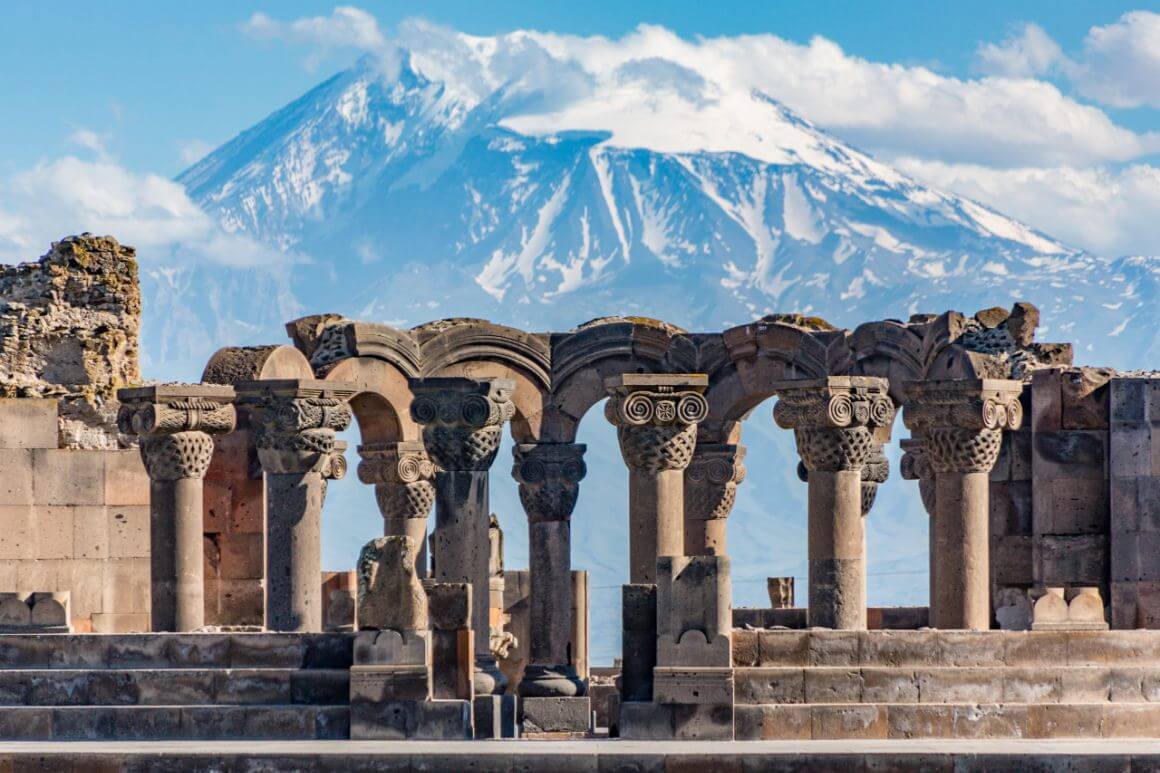
Still, if we were to generalize, Eastern European’s are typically welcoming and hospitable. That said, they can often seem a bit frosty – and do remember that in Russia, perpetual smiling is seen as a sign of stupidity rather than of happiness!
The entire region was united under the Soviet Union. The legacy of this is very complicated. One of the best and most insightful experiences you can have in Eastern Europe is talking to older residents about their life under communism and Dictatorship.
Useful Travel Phrases for Eastern Europe
English is not widely spoken in Eastern Europe (although Armenian’s do learn it at school from a young age). The only exceptions are the EU states and even then, it is only in cities or where you can count on finding English speakers.
There are too many native languages to get your head around so the best option by far, is to try and master some Russian which is still widely understood across the entire region.
- Hello! – Zdravstvuyte!
- How are you? – Kak dela?
- Please. – Pozhaluysta.
- Thank you.. – Spasibo.
- I’m sorry. – Proshu proshcheniya.
- Excuse me. – Izvinite.
- No Straw Please – bez solomy, pozhaluysta
- Could you help me, please? –– Vy ne mogli by mne pomoch?
- Where is the toilet? – Gde tualet?
- Where is the bus station, please? – Skazhyte pozhaluysta, gde avtobusnaya ostanovka?
- Two Beers Please – 2 piva, pozhaluysta
- No Plastic Bag – Pozhaluysta, bez polietilenovogo paketa
Note that the most intense language barrier is probably in Russia. Historical animosities mean that even to this day Russian’s are a bit reluctant to learn English! To get the most from traveling in Russia, do make some real effort with the language.
Dating in Eastern Europe
In my view, Eastern Europe has some of the most beautiful women in the entire world. Russia, Ukraine and Poland are well renowned for their tall, slim, exquisite beauties (think Bond girls or lingerie models). The region’s men are stereotypically a bit on the macho/rough and ready side (think Vladimir Putin riding a bear) so if that’s your thing, come get your fill.
Eastern Europe is not quite as sexually liberated/morally decadent (delete as applicable) as Western Europe and slightly more traditional/repressive attitudes towards courtship still prevail. Basically, don’t expect anybody to jump into bed with you.
I am also very saddened to say that non-hetrosexuality is not as widely accepted as in other parts of the world. In fact, in parts of Russia and the Caucasus, homosexiality is still often seen as an outright aberration so do keep that in mind.
Books to Read About Eastern Europe
The Russian language has provided some of the truly great works of human literature and reading the works of Tolstoy & Dostaevsky can actually provide a valuable insight into the Eastern European mind. Or, you can just read history and travel books. Here are a few top picks from each category;
The Master and Margarita – Mikhail Bulgakov
The riotous, surreal and allegorical tale of time the Devil came to visit the Soviet Union.
A History of Eastern Europe, Crisis & Change – Robert Bideleux
A potted history of the entire region from antiquity to the modern day. A great overview and general introduction.
Fieldwork in Ukrainian Sex – Oksana Zabuzhko
One of the boldest auti-biographical accounts since Ukranian independence, confronting taboo subjects and conservative attitudes.
Black Dog of Fate: An American Son Uncovers His Armenian Past – Peter Balakian
A man growing up in 50’s New Jersey learns the truth about his Armenian heritage and the terrible genocide at the hands of the Turkish.
A Modern History of Eastern Europe
At the end of WWII, the entire region was occupied by Russian forces and as such, fell under the influence of the Kremlin and of Stalin. This meant that communism was effectively imposed on all of the Eastern European nations. Some were absorbed into the USSR itself whilst others had Moscow-phile, puppet governments installed.
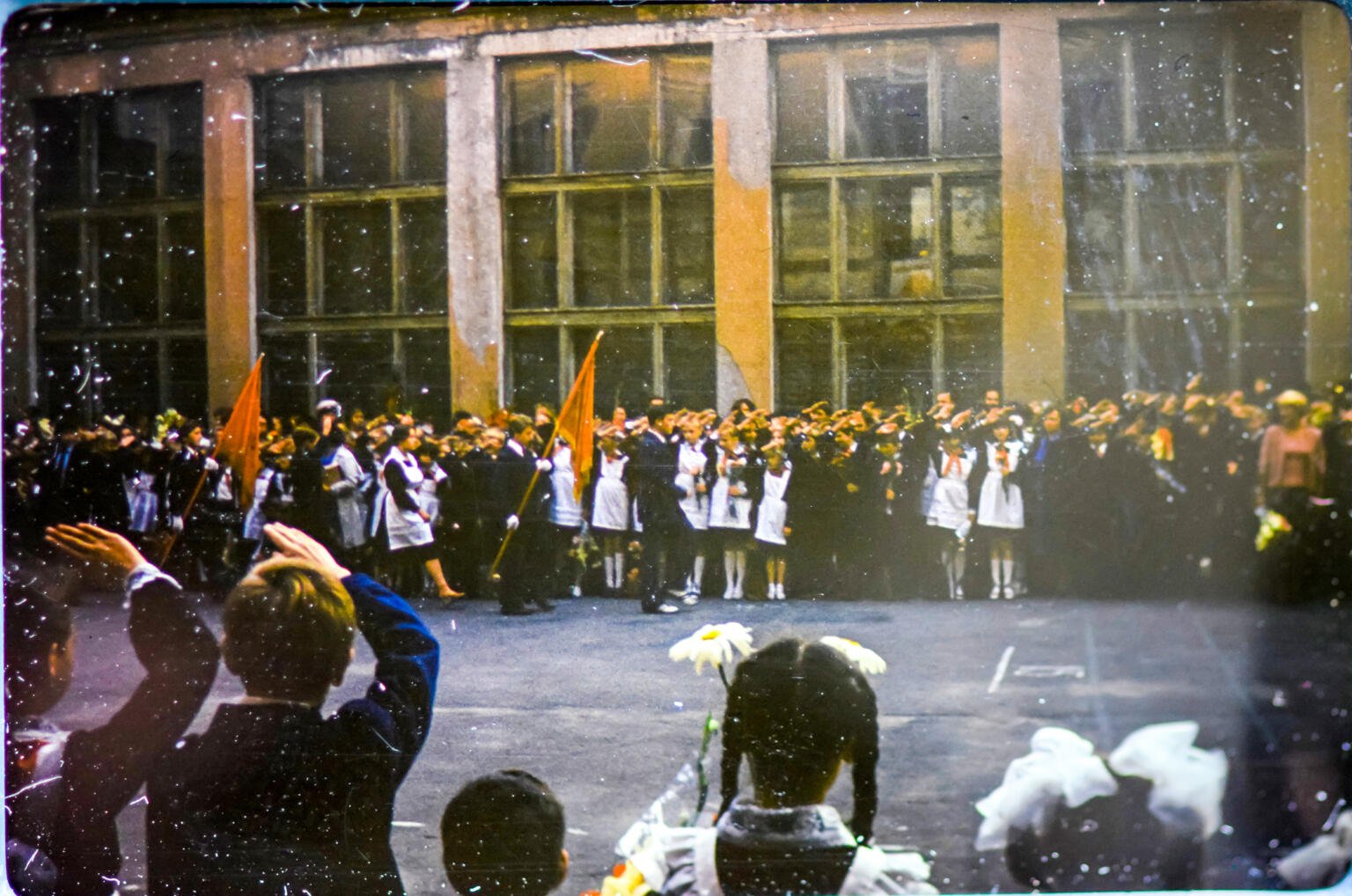
The years spent under communism are now widely regarded as a time of personal, political & spiritual repression and of economic stagnation. Still, there is some Soviet-nostalgia to be found depending upon who you speak to.
With the fall of communism in 1989, most nations in the region declared independence, embraced capitalism and sought immediate alliances with the west. Many nations have now obtained EU membership and others are hopeful of attaining it. A resurgent Russia is now seeking to redress this and effectively annexed the Crimea from Ukraine in 2015.
Some Unique Experiences in Eastern Europe

Things go wrong on the road ALL THE TIME. Be prepared for what life throws at you.
Buy an AMK Travel Medical Kit before you head out on your next adventure – don’t be daft!
Buy on REIHiking in the Caucasus
Stretching from Georgia into Armenia and Azerbaijan, the Caucasus mountain range is where east meets west and where crusading armies once passed en route to “liberate” the holy land. These days they offer the chance for some fantastic day or multi day hiking in some of the most preserved and rural regions in all of Europe. Think green mountain sides, crumbled castles, cave monasteries and shepherd herders.
Road of Bones – Siberia

If you want a truly bad ass (and seriously dangerous) adventure then motorbiking across Siberia’s road of bones is as bad-ass as it gets. The road which stretches across one of the harshest regions on earth gets its name from all the political prisoners who were sent there by Stalin and forced to build the road – their bones still lie in the ground.
This is not for beginners or for the faint hearted.
Cruise on the Danube
The beautiful blue Danube, it’s elegance so poignantly captured in Strauss’ waltz, stretches from Austria through Hungary into the Black Sea. Danube Cruises offer the chance to pass through Slovakia and Hungary from the comfort of a cruise liner.
These trips don’t come cheap and are not exactly adrenaline-athons – but still, it’s certainly a novel way to explore the region.
Joining an Organized Tour in Eastern Europe
The Broke Backpacker is a travel site by and for backpackers. We encourage independent travel wherever possible. However, if ever there was a case for joining an organised tour, then certain parts of Eastern Europe may be it.
Joining an organised tour will help deal with the very real language barrier you will encounter in Russia, Moldova & Belarus and may also help deal with the vast distances and border formalities.
I also once travelled with an Australian couple who hired a guide to take them round Armenia. They found it helped deal with transport into the rural areas which can be otherwise hard to get to.
Final Advice Before Visiting Eastern Europe
Backpacking in Eastern Europe will not disappoint you. Whichever of these wonderful countries you choose to visit will reward you with fascinating insights, cherished memories, decent photographs and maybe a few hangovers.
Have you been to to Eastern Europe before? Let us know about your experience in the comments below!
Buy Us a Coffee!
A couple of you lovely readers suggested we set up a tip jar for direct support as an alternative to booking through our links. So we created one!
You can now buy The Broke Backpacker a coffee. If you like and use our content to plan your trips, it’s a much appreciated way to show appreciation 🙂



